Women Empowerment – Workshop 2 (Empowering Beliefs)

The Appleton Greene Corporate Training Program (CTP) for Women Empowerment is provided by Ms. Tull Certified Learning Provider (CLP). Program Specifications: Monthly cost USD$2,500.00; Monthly Workshops 6 hours; Monthly Support 4 hours; Program Duration 12 months; Program orders subject to ongoing availability.
If you would like to view the Client Information Hub (CIH) for this program, please Click Here
Learning Provider Profile

Ms. Tull is a Certified Learning Provider (CLP) with Appleton Greene. She has over 25 years of experience in coaching, consulting and training CEO’s and executives. She specializes in the areas of personal and professional development and leadership. She is passionate about empowering women in the workplace equipping them with leadership skills and helping them to reveal their unique value, so they can reach their true potential and make a bigger impact. She has industry experience in the following sectors: Technology, Financial Services, Biomedical, Consultancy and Healthcare. She has commercial experience in the following countries: United States, Canada, England, Mexico and Sweden. More specifically within the following cities: Austin, TX; Houston, TX; Dallas, TX; Los Angeles, CA; New York City NY; St. Louis, MS; Virginia Beach, VA; Chicago IL. Her personal achievements include 17 yrs. as Founder/CEO of Silverlining Concepts, LLC where she empowers business owners and leaders to own their value and earn their worth, Certified Money Breakthrough Method Coach, Best-selling Author of a book about owning your value, so you can earn your worth in the workplace, Executive Contributor to Huffington Post, Biz Journals and Brainz Magazine, featured on the Brainz 500 Global list 2021. She also is a co-host on a national TV show- that focuses on bringing more light and positivity to the world. Her service skills include; leadership development, executive coaching, business strategy, sales and marketing strategies, mindset shifting and advanced communications and presentation skills.
MOST Analysis
Mission Statement
The Empowering Beliefs Workshop focuses on the fact that everyone has limiting beliefs holding us back, keeping us playing small and preventing us from reaching our true potential. By the end of the workshop, the women on your team will be equipped with an empowered belief system and a positive mindset allowing them to reach their goals and show up as powerful and confident leaders with the tools necessary to live their best life.
Objectives
1. Belief System – It’s all about your belief system. You become what you think and believe. In the first course of the workshop, we take a deep dive into understanding the belief system and how it works and steps on how to re-shape your belief system to be in alignment with your goals.
2. Empowered Beliefs – Limiting beliefs can keep us stuck and can sabotage our success. We take a deep dive understanding where these beliefs come from and how they’re formed. We will go through a transformational process that will allow you to reveal and recognize those blocks and learn how to let them go so you can start living up to your full potential.
3. Attitudes and Behavior – Everything we do at work from our relationships to finding new prospects is influenced by how we act. Our professional reputation and career can be boosted as much by our attitude and behavior as by our talents and expertise. We will learn the ABC Structure of Attitudes by Dr. Saul McLeod and the Four Functions of Attitudes by Daniel Katz. We will also discuss how our attitude is formed. In addition, we will uncover Behavioral Intention and Actual Behavior and learn 10 methods to keep your professional behavior at work.
4. Breakthrough Resistance – Resistance can prevent us from moving ahead in all areas of our lives. We will reveal what resistance is and how to recognize it. We will go through the Letting Go of Resistance Process. We’ll learn 3 Tips to Avoid Resistance along with Strategies to address conflict in the workplace. Resistance can be a major obstacle to having what we want and feeling the way we want to. Possessing the tools, you will learn in this course will allow you to get back into the flow again.
5. Overcoming Fear – Everyone is afraid of failure or the fear of the unknown. We can choose to let fear paralyze us or motivate us. In this course, you will learn 7 important facts about fear and the 5 steps to conquering your fear. The only way to grow as a person, a business professional and a leader is to step outside your comfort zone and face your fears, doubts, and the limiting beliefs you have about yourself. Everything you want is on the other side of fear.
6. Treating Trauma – Trauma may be the culprit when it comes to not reaching our goals. Sometimes a small experience from our childhood or a negative experience we had as an adult can create a traumatic loop that can sabotage our success. There are steps you can take to ensure that your traumas do not define your future. In this course, we will learn how to regain control of our minds and create the story we want to live.
7. Be Consistent – Many of us stop short before reaching our goals. Consistency is the difference between failure and success. The problem is the road to consistency is not easy, as there are numerous distractions along the way. In this course, we discuss the 3 Consistency Pillars, 10 reasons why consistency is essential and 10 strategies for dealing with inconsistency. You will gain all of the tools you need to maintain consistency in your life so your actions will start to drive your results.
8. Power of Focus – Focus has the power to transform our lives. What you focus on grows. Focus is a powerful trait that has served many in various leadership roles. In this course, we will dive deep into examples of success stories of highly successful people in history and how they used focus to succeed. We’ll learn the advantages of being focused, how to improve focus and 4 strategies to bring focus to work.
9. Navigating Transition – Life is full of changes and with those changes comes transition. Certain life events can leave us feeling overwhelmed, anxious, or uncertain. These changes cause us to question our beliefs, personal values and even ourselves. In this course, we address the 5 Stages of Change also known as the Transtheoretical Model- this helps us to become aware of and understand each of the 5 stages we go through, so we can achieve sustainable long-term change.
10. Beliefs in Leadership – Belief is the #1 leadership attribute. How we believe in ourselves, our mission, our people, and their belief in us will define your leadership success. In this course, we discuss the 5 Leadership Styles, the 21 Leadership Values and Beliefs and how to implement them into your role as a leader. Bottom line, a great leader not only adds value to others, but through their positive influence they can change the attitude and behavior of others.
11. Empowered Thinking – It’s true, our thoughts influence our actions. Our actions in turn, determine whether or not we succeed in our career, relationships and in life. In this course, we define positive thinking, and the physical and mental advantages of positive thinking. We can actually train ourselves to have a more positive outlook with practice by learning some powerful positive thinking techniques. We will also discuss how we can reap the benefits of positive thinking, so we can begin to change our life and the lives of others for the better.
12. Power Statement – The majority of us have BIG DREAMS for our lives. Unfortunately, most people have no idea how to make their dreams a reality. If you want to transform your life and the lives of others, make an impact on the world, and get paid good money to do it you can. If you BELIEVE you can. In this final course of the workshop, you will discover 8 new Passion Beliefs™ you can adopt to help you create your new and empowered belief system. We will also go through a powerful exercise where you get to create your personal Power Statement which represents the new version of yourself that you’re stepping into.
Strategies
1. Engage and elicit expectations for the course, introduce the concept of belief systems and why they are important
2. Present Allowing Process to eliminate limiting beliefs
3. Discover a method to establish a work environment that fosters positive attitudes
4. Learn how to breakthrough resistance with the Letting Go Process
5. Identify greatest fears and go through a 5-step process to conquer that fear
6. Practice and learn how to address past trauma begin to re-frame experiences and shift perspectives
7. Create standardized Commitment Process to stay consistent in our actions, so we can reach our goals.
8. Learn powerful focus techniques to reach goals quicker, improve teamwork and communication skills
9. Develop a Job Transition Plan – to demonstrate current role and responsibility to successor and ensure a smooth transition into your new role
10. Increase self-awareness of your leadership traits and styles
11. Access positive thinking techniques and how to can use them while leading others
12. Create a Personal Power Statement representing the new version of ourselves we’re stepping into
Tasks
1. Go through the Study Guide and Distance Learning lessons first and make notes.
2. Identify the key relationships that need to be managed to ensure project success.
3. Determine needs, critical drivers, concerns, and interests for each relationship.
4. Ensure that these relationships are built and maintained on a regular basis, by soliciting ideas, comments, and assessing value.
5. Schedule a meeting for the participants to meet and discuss the workshop within 30 days
6. Participants to share expectations and feedback during the workshop.
7. Set a deadline for determining and analyzing the time commitment for each of the participants.
8. Participants to demonstrate personal presence, get feedback, and make a plan for further development.
9. Participants to experience the challenges of change and apply learnings to the philosophy of leading change.
10. Participants are to complete each exercise fully, actively participate in all of the group exercises and be willing to discuss the process and results with the group.
11. Participants to complete their project by identifying and implementing changes discussed throughout the workshop.
12. Participants to review resources for inspiration and identify at least one new tool for adoption from the provided list.
Introduction
The second workshop in our Women Empowerment Program – Empowering Beliefs continues to work on developing a positive shift in our mindset.
Many women professionals have a limited or a negative belief system that prevents them from reaching their desired level of success in their life and their career.
During this workshop, through the impactful training and exercises; we will identify what a belief system is while assessing our own, acknowledge any limiting beliefs we have, and go through a transformational process to let them go. We will take a deep dive into how fear may be keeping us stuck and what we can do to conquer it. We will learn how trauma can also play a role in our lives negatively impacting our mindset and sabotaging our success, we’ll discover how to navigate transition effectively and finally discover powerful positive thinking techniques. By the end of the workshop, the women on your team will be equipped with an empowered belief system allowing them to reach their goals and show up as a powerful and confident leader.

History
A common self-limiting belief is “Men are simply respected more than women.” Of course, this isn’t always correct, yet it holds some weight. It wasn’t long ago that men were considered breadwinners and women were considered housewives in the United States. Some people who grew up during the period of this mindset are still working. More recently, however, 70% of households have two incomes. As a result, it is clear that the old way of life is fading and that new norms are emerging. According to a 2008 Pew Research Center Social and Demographic Trends study, women are more honest and intelligent than men. The ability to recognize and control emotions, is what leads to the affective construct of self-worth, which then leads to the cognitive construct. They enable us to make sense of our experiences, believe in our abilities, and develop an authentic identity based on our talents and beliefs when we work together.

Current Position
We have gained significant benefits from the growing role of women in the economy.
“Women are emotional in a way that men are not.” This stereotype has been heard by many women with professional experience. For a long time, emotions were viewed as a negative in the business world, but many companies are beginning to see the benefits. Because positive emotions are contagious, they are not only beneficial to the workplace environment, but they are also profitable, because happy employees are more productive. Furthermore, many employers seek employees with high levels of emotional intelligence. A person who is emotionally intelligent can sense and interpret the emotions of those around her and use this information wisely. This is extremely useful in a variety of situations, including working with customers to close sales and resolving office conflicts to reduce employee turnover.

Future Outlook
When one believes in themselves, there is little that can stop them from having or becoming whatever, they want in life. Self-belief empowers us to push forward and defy the odds. We are able to face and overcome any obstacles that arise. We’ll also have the power to brush off the naysayers. When we maintain our self-belief, we will have peace of mind.
When we believe in ourselves, we exude confidence. This is different from arrogance. Self-belief is a calm, quiet, and powerful tool, and others will be drawn to it. They will follow our lead, and we will assist in demonstrating what is possible. When we encounter stumbling blocks and challenges along the way (which we will), our confidence will help us move forward. When necessary, we’ll figure out how to take alternative action. People who follow us will respect us for it as well.
We must also have access to tools that we can use to empower our mindset and to keep us on track. It is essential that the workplace environment supports the empowerment and belief system of each women employee. When they believe in themselves and that they are capable leader, this belief provides the energy and focus required to take action. It assists us in positively moving forward and completing our tasks contributing to the success of the company.
Situations, people, and forces will all attempt to bring us down. It is important to create a healthy environment of supportive team members around us. This kind of support will help us stay strong, moving forward with our journey in life to achieve what we want, both personally, professionally, and collectively.
This training workshop will provide the knowledge and tools to create an empowered belief system. To start we will discover what a belief system actually is and then go through a method of identifying old limiting beliefs. We will then, together, learn a transformational process in how to release the negatives beliefs and replace them with new empowering beliefs, so we can be the leader we’re meant to be and live our best life! We will begin to understand fear and how to overcome it once and for all allowing us to live a life and thrive in our careers without limits. Finally, we will have the opportunity to adopt new healthy and empowered beliefs that will serve us in reaching our goals moving forward.
Executive Summary
Empowering Beliefs is the second workshop in our Women Empowerment Program. It focuses on the fact that everyone has limiting beliefs holding us back, keeping us playing small and preventing us from reaching our true potential.
Self-limiting beliefs can become self-fulfilling prophecies, affecting not only our career but also our quality of life. As a result, it is critical for women to replace negative, destructive thoughts with positive, empowering thoughts. The first step is to determine which beliefs you accept. Then, to counteract the negativity, by deciding what we do want or create positive self-affirmations and repeat them frequently. Here’s an example; If you’re struggling with a self-limiting belief about your emotions, try saying to yourself, “My positive emotions are good for my coworkers and company.” When I have a bad day, I can control my emotions and continue to make wise decisions.”
We as individuals, have the power to control our thoughts once we understand where the thoughts are coming from. Our thoughts shape our belief system. Our thoughts effect our feelings which dictates our actions and impacts our results. It is essential that we develop a positive and empowered belief system in order to take the necessary actions to reach success in our lives and in our careers.

There are 12 courses (or focus areas) in the Empowering Beliefs Workshop.
Here they are:
1. Belief System – It’s all about your belief system. You become what you think and believe. In the first course of the workshop, we take a deep dive into understanding the belief system and how it works. We uncover the affects that our belief system can have on our health and the results in our life. Learn simple yet powerful steps we can take to change our belief system. Finally, we will uncover exactly how we can change our thinking to help us get what we want and make our dreams a reality.

2. Empowered Beliefs – This course module addresses limiting beliefs what they are and how they’re formed. It focuses on what we can do to identify the blocks and barriers that may be holding us back from reaching our true potential. We will go through a transformational process that will allow you to reveal and recognize those blocks and learn how to let them go so you can start living up to your full potential.

3. Attitudes and Behavior – In this section of the workshop, we discuss how everything we do at work from our relationships to finding new prospects is influenced by how we act. Our professional reputation and career can be boosted as much by our attitude and behavior as by our talents and expertise. We will learn the ABC Structure of Attitudes by Dr. Saul McLeod and the Four Functions of Attitudes by Daniel Katz. We will also discuss how our attitude is formed. In addition, we will uncover Behavioral Intention and Actual Behavior and learn 10 methods to keep your professional behavior at work.

4. Breakthrough Resistance – Resistance can prevent us from moving ahead in all areas of our lives. In this course, we will reveal what resistance is and how to recognize it. We will go through the Letting Go of Resistance Process. We’ll learn 3 Tips to Avoid Resistance along with Strategies to address conflict in the workplace. Resistance can be a major obstacle to having what we want and feeling the way we want to. Possessing the tools, you will learn in this course will allow you to get back into the flow again.

5. Overcoming Fear – Everyone is afraid of failure or the fear of the unknown. We can choose to let fear paralyze us or motivate us. In this course, you will learn 7 important facts about fear and the 5 steps to conquering your fear. The only way to grow as a person, a business professional and a leader is to step outside your comfort zone and face your fears, doubts, and the limiting beliefs you have about yourself. Everything you want is on the other side of fear.

6. Treating Trauma – Trauma may be the culprit when it comes to not reaching our goals. Sometimes a small experience from our childhood or a negative experience we had as an adult can create a traumatic loop that can sabotage our success. There are steps you can take to ensure that your traumas do not define your future. In this course, we will learn how to regain control of our minds and create the story we want to live.

7. Be Consistent – Many of us stop short before reaching our goals. Consistency is the difference between failure and success. The problem is the road to consistency is not easy, as there are numerous distractions along the way. In this course, we discuss the 3 Consistency Pillars, 10 reasons why consistency is essential and 10 strategies for dealing with inconsistency. You will gain all of the tools you need to maintain consistency in your life so your actions will start to drive your results.

8. Power of Focus – Focus has the power to transform our lives. What you focus on grows. Focus is a powerful trait that has served many in various leadership roles. In this course, we will dive deep into examples of success stories of highly successful people in history and how they used focus to succeed. We’ll learn the advantages of being focused, how to improve focus and 4 strategies to bring focus to work.

9. Navigating Transition – Life is full of changes and with those changes comes transition. Certain life events can leave us feeling overwhelmed, anxious, or uncertain. These changes cause us to question our beliefs, personal values and even ourselves. In this course, we address the 5 Stages of Change also known as the Transtheoretical Model- this helps us to become aware of and understand each of the 5 stages we go through, so we can achieve sustainable long-term change. In this lesson we also define a new job transition plan and explain how to write one if and when you find your self in a career transition.

10. Beliefs in Leadership – Belief is the #1 leadership attribute. How we believe in ourselves, our mission, our people, and their belief in us will define your leadership success. In this course, we discuss the 5 Leadership Styles, the 21 Leadership Values and Beliefs and how to implement them into your role as a leader. Bottom line, a great leader not only adds value to others, but through their positive influence they can change the attitude and behavior of others.

11. Empowered Thinking – It’s true, our thoughts influence our actions. Our actions in turn, determine whether or not we succeed in our career, relationships and in life. In this course, we define positive thinking, and the physical and mental advantages of positive thinking. We can actually train ourselves to have a more positive outlook with practice by learning some powerful positive thinking techniques. We will also discuss how you can reap the benefits of positive thinking, so you can begin to change your life for the better.

12. Power Statement – The majority of us have BIG DREAMS for our lives. Unfortunately, most people have no idea how to make their dreams a reality. If you want to transform your life and the lives of others, make an impact on the world, and get paid good money to do it you can. If you BELIEVE you can. In this final course of the workshop, you will discover 8 new Passion Beliefs™ you can adopt to help you create your new and empowered belief system. We will also go through a powerful exercise where you get to create your personal Power Statement which represents the new version of yourself that you’re stepping into.

Impact for Positive Change
At the conclusion of each workshop, we will focus our collective attention on how you, as a leader, will put what we’ve learned into practice in your business. Impact for positive change means putting what you’ve learned into practice and taking action to make a significant difference. That starts with a strong desire to change and reflection on what you’re going to do differently. It’s also crucial to consider how you’ll involve people in your organization in the discussion about what you’ve learnt and make requests for what you need from them in order to succeed. Not only will your formal team be involved, but so will your cross-functional colleagues. How would you collaborate to ensure all the women in your company have everything they need to succeed?
Curriculum
Women Empowerment – Workshop 2 – Empowering Beliefs
- Belief System
- Limiting Beliefs
- Attitudes and Behavior
- Breakthrough Resistance
- Overcoming Fear
- Treating Trauma
- Be Consistent
- Power of Focus
- Navigating Transition
- Beliefs in Leadership
- Empowered Thinking
- Power Statement
Distance Learning
Introduction
Welcome to Appleton Greene and thank you for enrolling on the Women Empowerment corporate training program. You will be learning through our unique facilitation via distance-learning method, which will enable you to practically implement everything that you learn academically. The methods and materials used in your program have been designed and developed to ensure that you derive the maximum benefits and enjoyment possible. We hope that you find the program challenging and fun to do. However, if you have never been a distance-learner before, you may be experiencing some trepidation at the task before you. So we will get you started by giving you some basic information and guidance on how you can make the best use of the modules, how you should manage the materials and what you should be doing as you work through them. This guide is designed to point you in the right direction and help you to become an effective distance-learner. Take a few hours or so to study this guide and your guide to tutorial support for students, while making notes, before you start to study in earnest.
Study environment
You will need to locate a quiet and private place to study, preferably a room where you can easily be isolated from external disturbances or distractions. Make sure the room is well-lit and incorporates a relaxed, pleasant feel. If you can spoil yourself within your study environment, you will have much more of a chance to ensure that you are always in the right frame of mind when you do devote time to study. For example, a nice fire, the ability to play soft soothing background music, soft but effective lighting, perhaps a nice view if possible and a good size desk with a comfortable chair. Make sure that your family know when you are studying and understand your study rules. Your study environment is very important. The ideal situation, if at all possible, is to have a separate study, which can be devoted to you. If this is not possible then you will need to pay a lot more attention to developing and managing your study schedule, because it will affect other people as well as yourself. The better your study environment, the more productive you will be.
Study tools & rules
Try and make sure that your study tools are sufficient and in good working order. You will need to have access to a computer, scanner and printer, with access to the internet. You will need a very comfortable chair, which supports your lower back, and you will need a good filing system. It can be very frustrating if you are spending valuable study time trying to fix study tools that are unreliable, or unsuitable for the task. Make sure that your study tools are up to date. You will also need to consider some study rules. Some of these rules will apply to you and will be intended to help you to be more disciplined about when and how you study. This distance-learning guide will help you and after you have read it you can put some thought into what your study rules should be. You will also need to negotiate some study rules for your family, friends or anyone who lives with you. They too will need to be disciplined in order to ensure that they can support you while you study. It is important to ensure that your family and friends are an integral part of your study team. Having their support and encouragement can prove to be a crucial contribution to your successful completion of the program. Involve them in as much as you can.
Successful distance-learning
Distance-learners are freed from the necessity of attending regular classes or workshops, since they can study in their own way, at their own pace and for their own purposes. But unlike traditional internal training courses, it is the student’s responsibility, with a distance-learning program, to ensure that they manage their own study contribution. This requires strong self-discipline and self-motivation skills and there must be a clear will to succeed. Those students who are used to managing themselves, are good at managing others and who enjoy working in isolation, are more likely to be good distance-learners. It is also important to be aware of the main reasons why you are studying and of the main objectives that you are hoping to achieve as a result. You will need to remind yourself of these objectives at times when you need to motivate yourself. Never lose sight of your long-term goals and your short-term objectives. There is nobody available here to pamper you, or to look after you, or to spoon-feed you with information, so you will need to find ways to encourage and appreciate yourself while you are studying. Make sure that you chart your study progress, so that you can be sure of your achievements and re-evaluate your goals and objectives regularly.
Self-assessment
Appleton Greene training programs are in all cases post-graduate programs. Consequently, you should already have obtained a business-related degree and be an experienced learner. You should therefore already be aware of your study strengths and weaknesses. For example, which time of the day are you at your most productive? Are you a lark or an owl? What study methods do you respond to the most? Are you a consistent learner? How do you discipline yourself? How do you ensure that you enjoy yourself while studying? It is important to understand yourself as a learner and so some self-assessment early on will be necessary if you are to apply yourself correctly. Perform a SWOT analysis on yourself as a student. List your internal strengths and weaknesses as a student and your external opportunities and threats. This will help you later on when you are creating a study plan. You can then incorporate features within your study plan that can ensure that you are playing to your strengths, while compensating for your weaknesses. You can also ensure that you make the most of your opportunities, while avoiding the potential threats to your success.
Accepting responsibility as a student
Training programs invariably require a significant investment, both in terms of what they cost and in the time that you need to contribute to study and the responsibility for successful completion of training programs rests entirely with the student. This is never more apparent than when a student is learning via distance-learning. Accepting responsibility as a student is an important step towards ensuring that you can successfully complete your training program. It is easy to instantly blame other people or factors when things go wrong. But the fact of the matter is that if a failure is your failure, then you have the power to do something about it, it is entirely in your own hands. If it is always someone else’s failure, then you are powerless to do anything about it. All students study in entirely different ways, this is because we are all individuals and what is right for one student, is not necessarily right for another. In order to succeed, you will have to accept personal responsibility for finding a way to plan, implement and manage a personal study plan that works for you. If you do not succeed, you only have yourself to blame.
Planning
By far the most critical contribution to stress, is the feeling of not being in control. In the absence of planning we tend to be reactive and can stumble from pillar to post in the hope that things will turn out fine in the end. Invariably they don’t! In order to be in control, we need to have firm ideas about how and when we want to do things. We also need to consider as many possible eventualities as we can, so that we are prepared for them when they happen. Prescriptive Change, is far easier to manage and control, than Emergent Change. The same is true with distance-learning. It is much easier and much more enjoyable, if you feel that you are in control and that things are going to plan. Even when things do go wrong, you are prepared for them and can act accordingly without any unnecessary stress. It is important therefore that you do take time to plan your studies properly.
Management
Once you have developed a clear study plan, it is of equal importance to ensure that you manage the implementation of it. Most of us usually enjoy planning, but it is usually during implementation when things go wrong. Targets are not met and we do not understand why. Sometimes we do not even know if targets are being met. It is not enough for us to conclude that the study plan just failed. If it is failing, you will need to understand what you can do about it. Similarly if your study plan is succeeding, it is still important to understand why, so that you can improve upon your success. You therefore need to have guidelines for self-assessment so that you can be consistent with performance improvement throughout the program. If you manage things correctly, then your performance should constantly improve throughout the program.
Study objectives & tasks
The first place to start is developing your program objectives. These should feature your reasons for undertaking the training program in order of priority. Keep them succinct and to the point in order to avoid confusion. Do not just write the first things that come into your head because they are likely to be too similar to each other. Make a list of possible departmental headings, such as: Customer Service; E-business; Finance; Globalization; Human Resources; Technology; Legal; Management; Marketing and Production. Then brainstorm for ideas by listing as many things that you want to achieve under each heading and later re-arrange these things in order of priority. Finally, select the top item from each department heading and choose these as your program objectives. Try and restrict yourself to five because it will enable you to focus clearly. It is likely that the other things that you listed will be achieved if each of the top objectives are achieved. If this does not prove to be the case, then simply work through the process again.
Study forecast
As a guide, the Appleton Greene Women Empowerment corporate training program should take 12-18 months to complete, depending upon your availability and current commitments. The reason why there is such a variance in time estimates is because every student is an individual, with differing productivity levels and different commitments. These differentiations are then exaggerated by the fact that this is a distance-learning program, which incorporates the practical integration of academic theory as an as a part of the training program. Consequently all of the project studies are real, which means that important decisions and compromises need to be made. You will want to get things right and will need to be patient with your expectations in order to ensure that they are. We would always recommend that you are prudent with your own task and time forecasts, but you still need to develop them and have a clear indication of what are realistic expectations in your case. With reference to your time planning: consider the time that you can realistically dedicate towards study with the program every week; calculate how long it should take you to complete the program, using the guidelines featured here; then break the program down into logical modules and allocate a suitable proportion of time to each of them, these will be your milestones; you can create a time plan by using a spreadsheet on your computer, or a personal organizer such as MS Outlook, you could also use a financial forecasting software; break your time forecasts down into manageable chunks of time, the more specific you can be, the more productive and accurate your time management will be; finally, use formulas where possible to do your time calculations for you, because this will help later on when your forecasts need to change in line with actual performance. With reference to your task planning: refer to your list of tasks that need to be undertaken in order to achieve your program objectives; with reference to your time plan, calculate when each task should be implemented; remember that you are not estimating when your objectives will be achieved, but when you will need to focus upon implementing the corresponding tasks; you also need to ensure that each task is implemented in conjunction with the associated training modules which are relevant; then break each single task down into a list of specific to do’s, say approximately ten to do’s for each task and enter these into your study plan; once again you could use MS Outlook to incorporate both your time and task planning and this could constitute your study plan; you could also use a project management software like MS Project. You should now have a clear and realistic forecast detailing when you can expect to be able to do something about undertaking the tasks to achieve your program objectives.
Performance management
It is one thing to develop your study forecast, it is quite another to monitor your progress. Ultimately it is less important whether you achieve your original study forecast and more important that you update it so that it constantly remains realistic in line with your performance. As you begin to work through the program, you will begin to have more of an idea about your own personal performance and productivity levels as a distance-learner. Once you have completed your first study module, you should re-evaluate your study forecast for both time and tasks, so that they reflect your actual performance level achieved. In order to achieve this you must first time yourself while training by using an alarm clock. Set the alarm for hourly intervals and make a note of how far you have come within that time. You can then make a note of your actual performance on your study plan and then compare your performance against your forecast. Then consider the reasons that have contributed towards your performance level, whether they are positive or negative and make a considered adjustment to your future forecasts as a result. Given time, you should start achieving your forecasts regularly.
With reference to time management: time yourself while you are studying and make a note of the actual time taken in your study plan; consider your successes with time-efficiency and the reasons for the success in each case and take this into consideration when reviewing future time planning; consider your failures with time-efficiency and the reasons for the failures in each case and take this into consideration when reviewing future time planning; re-evaluate your study forecast in relation to time planning for the remainder of your training program to ensure that you continue to be realistic about your time expectations. You need to be consistent with your time management, otherwise you will never complete your studies. This will either be because you are not contributing enough time to your studies, or you will become less efficient with the time that you do allocate to your studies. Remember, if you are not in control of your studies, they can just become yet another cause of stress for you.
With reference to your task management: time yourself while you are studying and make a note of the actual tasks that you have undertaken in your study plan; consider your successes with task-efficiency and the reasons for the success in each case; take this into consideration when reviewing future task planning; consider your failures with task-efficiency and the reasons for the failures in each case and take this into consideration when reviewing future task planning; re-evaluate your study forecast in relation to task planning for the remainder of your training program to ensure that you continue to be realistic about your task expectations. You need to be consistent with your task management, otherwise you will never know whether you are achieving your program objectives or not.
Keeping in touch
You will have access to qualified and experienced professors and tutors who are responsible for providing tutorial support for your particular training program. So don’t be shy about letting them know how you are getting on. We keep electronic records of all tutorial support emails so that professors and tutors can review previous correspondence before considering an individual response. It also means that there is a record of all communications between you and your professors and tutors and this helps to avoid any unnecessary duplication, misunderstanding, or misinterpretation. If you have a problem relating to the program, share it with them via email. It is likely that they have come across the same problem before and are usually able to make helpful suggestions and steer you in the right direction. To learn more about when and how to use tutorial support, please refer to the Tutorial Support section of this student information guide. This will help you to ensure that you are making the most of tutorial support that is available to you and will ultimately contribute towards your success and enjoyment with your training program.
Work colleagues and family
You should certainly discuss your program study progress with your colleagues, friends and your family. Appleton Greene training programs are very practical. They require you to seek information from other people, to plan, develop and implement processes with other people and to achieve feedback from other people in relation to viability and productivity. You will therefore have plenty of opportunities to test your ideas and enlist the views of others. People tend to be sympathetic towards distance-learners, so don’t bottle it all up in yourself. Get out there and share it! It is also likely that your family and colleagues are going to benefit from your labors with the program, so they are likely to be much more interested in being involved than you might think. Be bold about delegating work to those who might benefit themselves. This is a great way to achieve understanding and commitment from people who you may later rely upon for process implementation. Share your experiences with your friends and family.
Making it relevant
The key to successful learning is to make it relevant to your own individual circumstances. At all times you should be trying to make bridges between the content of the program and your own situation. Whether you achieve this through quiet reflection or through interactive discussion with your colleagues, client partners or your family, remember that it is the most important and rewarding aspect of translating your studies into real self-improvement. You should be clear about how you want the program to benefit you. This involves setting clear study objectives in relation to the content of the course in terms of understanding, concepts, completing research or reviewing activities and relating the content of the modules to your own situation. Your objectives may understandably change as you work through the program, in which case you should enter the revised objectives on your study plan so that you have a permanent reminder of what you are trying to achieve, when and why.
Distance-learning check-list
Prepare your study environment, your study tools and rules.
Undertake detailed self-assessment in terms of your ability as a learner.
Create a format for your study plan.
Consider your study objectives and tasks.
Create a study forecast.
Assess your study performance.
Re-evaluate your study forecast.
Be consistent when managing your study plan.
Use your Appleton Greene Certified Learning Provider (CLP) for tutorial support.
Make sure you keep in touch with those around you.

Tutorial Support
Programs
Appleton Greene uses standard and bespoke corporate training programs as vessels to transfer business process improvement knowledge into the heart of our clients’ organizations. Each individual program focuses upon the implementation of a specific business process, which enables clients to easily quantify their return on investment. There are hundreds of established Appleton Greene corporate training products now available to clients within customer services, e-business, finance, globalization, human resources, information technology, legal, management, marketing and production. It does not matter whether a client’s employees are located within one office, or an unlimited number of international offices, we can still bring them together to learn and implement specific business processes collectively. Our approach to global localization enables us to provide clients with a truly international service with that all important personal touch. Appleton Greene corporate training programs can be provided virtually or locally and they are all unique in that they individually focus upon a specific business function. They are implemented over a sustainable period of time and professional support is consistently provided by qualified learning providers and specialist consultants.
Support available
You will have a designated Certified Learning Provider (CLP) and an Accredited Consultant and we encourage you to communicate with them as much as possible. In all cases tutorial support is provided online because we can then keep a record of all communications to ensure that tutorial support remains consistent. You would also be forwarding your work to the tutorial support unit for evaluation and assessment. You will receive individual feedback on all of the work that you undertake on a one-to-one basis, together with specific recommendations for anything that may need to be changed in order to achieve a pass with merit or a pass with distinction and you then have as many opportunities as you may need to re-submit project studies until they meet with the required standard. Consequently the only reason that you should really fail (CLP) is if you do not do the work. It makes no difference to us whether a student takes 12 months or 18 months to complete the program, what matters is that in all cases the same quality standard will have been achieved.
Support Process
Please forward all of your future emails to the designated (CLP) Tutorial Support Unit email address that has been provided and please do not duplicate or copy your emails to other AGC email accounts as this will just cause unnecessary administration. Please note that emails are always answered as quickly as possible but you will need to allow a period of up to 20 business days for responses to general tutorial support emails during busy periods, because emails are answered strictly within the order in which they are received. You will also need to allow a period of up to 30 business days for the evaluation and assessment of project studies. This does not include weekends or public holidays. Please therefore kindly allow for this within your time planning. All communications are managed online via email because it enables tutorial service support managers to review other communications which have been received before responding and it ensures that there is a copy of all communications retained on file for future reference. All communications will be stored within your personal (CLP) study file here at Appleton Greene throughout your designated study period. If you need any assistance or clarification at any time, please do not hesitate to contact us by forwarding an email and remember that we are here to help. If you have any questions, please list and number your questions succinctly and you can then be sure of receiving specific answers to each and every query.
Time Management
It takes approximately 1 Year to complete the Women Empowerment corporate training program, incorporating 12 x 6-hour monthly workshops. Each student will also need to contribute approximately 4 hours per week over 1 Year of their personal time. Students can study from home or work at their own pace and are responsible for managing their own study plan. There are no formal examinations and students are evaluated and assessed based upon their project study submissions, together with the quality of their internal analysis and supporting documents. They can contribute more time towards study when they have the time to do so and can contribute less time when they are busy. All students tend to be in full time employment while studying and the Women Empowerment program is purposely designed to accommodate this, so there is plenty of flexibility in terms of time management. It makes no difference to us at Appleton Greene, whether individuals take 12-18 months to complete this program. What matters is that in all cases the same standard of quality will have been achieved with the standard and bespoke programs that have been developed.
Distance Learning Guide
The distance learning guide should be your first port of call when starting your training program. It will help you when you are planning how and when to study, how to create the right environment and how to establish the right frame of mind. If you can lay the foundations properly during the planning stage, then it will contribute to your enjoyment and productivity while training later. The guide helps to change your lifestyle in order to accommodate time for study and to cultivate good study habits. It helps you to chart your progress so that you can measure your performance and achieve your goals. It explains the tools that you will need for study and how to make them work. It also explains how to translate academic theory into practical reality. Spend some time now working through your distance learning guide and make sure that you have firm foundations in place so that you can make the most of your distance learning program. There is no requirement for you to attend training workshops or classes at Appleton Greene offices. The entire program is undertaken online, program course manuals and project studies are administered via the Appleton Greene web site and via email, so you are able to study at your own pace and in the comfort of your own home or office as long as you have a computer and access to the internet.
How To Study
The how to study guide provides students with a clear understanding of the Appleton Greene facilitation via distance learning training methods and enables students to obtain a clear overview of the training program content. It enables students to understand the step-by-step training methods used by Appleton Greene and how course manuals are integrated with project studies. It explains the research and development that is required and the need to provide evidence and references to support your statements. It also enables students to understand precisely what will be required of them in order to achieve a pass with merit and a pass with distinction for individual project studies and provides useful guidance on how to be innovative and creative when developing your Unique Program Proposition (UPP).
Tutorial Support
Tutorial support for the Appleton Greene Women Empowerment corporate training program is provided online either through the Appleton Greene Client Support Portal (CSP), or via email. All tutorial support requests are facilitated by a designated Program Administration Manager (PAM). They are responsible for deciding which professor or tutor is the most appropriate option relating to the support required and then the tutorial support request is forwarded onto them. Once the professor or tutor has completed the tutorial support request and answered any questions that have been asked, this communication is then returned to the student via email by the designated Program Administration Manager (PAM). This enables all tutorial support, between students, professors and tutors, to be facilitated by the designated Program Administration Manager (PAM) efficiently and securely through the email account. You will therefore need to allow a period of up to 20 business days for responses to general support queries and up to 30 business days for the evaluation and assessment of project studies, because all tutorial support requests are answered strictly within the order in which they are received. This does not include weekends or public holidays. Consequently you need to put some thought into the management of your tutorial support procedure in order to ensure that your study plan is feasible and to obtain the maximum possible benefit from tutorial support during your period of study. Please retain copies of your tutorial support emails for future reference. Please ensure that ALL of your tutorial support emails are set out using the format as suggested within your guide to tutorial support. Your tutorial support emails need to be referenced clearly to the specific part of the course manual or project study which you are working on at any given time. You also need to list and number any questions that you would like to ask, up to a maximum of five questions within each tutorial support email. Remember the more specific you can be with your questions the more specific your answers will be too and this will help you to avoid any unnecessary misunderstanding, misinterpretation, or duplication. The guide to tutorial support is intended to help you to understand how and when to use support in order to ensure that you get the most out of your training program. Appleton Greene training programs are designed to enable you to do things for yourself. They provide you with a structure or a framework and we use tutorial support to facilitate students while they practically implement what they learn. In other words, we are enabling students to do things for themselves. The benefits of distance learning via facilitation are considerable and are much more sustainable in the long-term than traditional short-term knowledge sharing programs. Consequently you should learn how and when to use tutorial support so that you can maximize the benefits from your learning experience with Appleton Greene. This guide describes the purpose of each training function and how to use them and how to use tutorial support in relation to each aspect of the training program. It also provides useful tips and guidance with regard to best practice.
Tutorial Support Tips
Students are often unsure about how and when to use tutorial support with Appleton Greene. This Tip List will help you to understand more about how to achieve the most from using tutorial support. Refer to it regularly to ensure that you are continuing to use the service properly. Tutorial support is critical to the success of your training experience, but it is important to understand when and how to use it in order to maximize the benefit that you receive. It is no coincidence that those students who succeed are those that learn how to be positive, proactive and productive when using tutorial support.
Be positive and friendly with your tutorial support emails
Remember that if you forward an email to the tutorial support unit, you are dealing with real people. “Do unto others as you would expect others to do unto you”. If you are positive, complimentary and generally friendly in your emails, you will generate a similar response in return. This will be more enjoyable, productive and rewarding for you in the long-term.
Think about the impression that you want to create
Every time that you communicate, you create an impression, which can be either positive or negative, so put some thought into the impression that you want to create. Remember that copies of all tutorial support emails are stored electronically and tutors will always refer to prior correspondence before responding to any current emails. Over a period of time, a general opinion will be arrived at in relation to your character, attitude and ability. Try to manage your own frustrations, mood swings and temperament professionally, without involving the tutorial support team. Demonstrating frustration or a lack of patience is a weakness and will be interpreted as such. The good thing about communicating in writing, is that you will have the time to consider your content carefully, you can review it and proof-read it before sending your email to Appleton Greene and this should help you to communicate more professionally, consistently and to avoid any unnecessary knee-jerk reactions to individual situations as and when they may arise. Please also remember that the CLP Tutorial Support Unit will not just be responsible for evaluating and assessing the quality of your work, they will also be responsible for providing recommendations to other learning providers and to client contacts within the Appleton Greene global client network, so do be in control of your own emotions and try to create a good impression.
Remember that quality is preferred to quantity
Please remember that when you send an email to the tutorial support team, you are not using Twitter or Text Messaging. Try not to forward an email every time that you have a thought. This will not prove to be productive either for you or for the tutorial support team. Take time to prepare your communications properly, as if you were writing a professional letter to a business colleague and make a list of queries that you are likely to have and then incorporate them within one email, say once every month, so that the tutorial support team can understand more about context, application and your methodology for study. Get yourself into a consistent routine with your tutorial support requests and use the tutorial support template provided with ALL of your emails. The (CLP) Tutorial Support Unit will not spoon-feed you with information. They need to be able to evaluate and assess your tutorial support requests carefully and professionally.
Be specific about your questions in order to receive specific answers
Try not to write essays by thinking as you are writing tutorial support emails. The tutorial support unit can be unclear about what in fact you are asking, or what you are looking to achieve. Be specific about asking questions that you want answers to. Number your questions. You will then receive specific answers to each and every question. This is the main purpose of tutorial support via email.
Keep a record of your tutorial support emails
It is important that you keep a record of all tutorial support emails that are forwarded to you. You can then refer to them when necessary and it avoids any unnecessary duplication, misunderstanding, or misinterpretation.
Individual training workshops or telephone support
Please be advised that Appleton Greene does not provide separate or individual tutorial support meetings, workshops, or provide telephone support for individual students. Appleton Greene is an equal opportunities learning and service provider and we are therefore understandably bound to treat all students equally. We cannot therefore broker special financial or study arrangements with individual students regardless of the circumstances. All tutorial support is provided online and this enables Appleton Greene to keep a record of all communications between students, professors and tutors on file for future reference, in accordance with our quality management procedure and your terms and conditions of enrolment. All tutorial support is provided online via email because it enables us to have time to consider support content carefully, it ensures that you receive a considered and detailed response to your queries. You can number questions that you would like to ask, which relate to things that you do not understand or where clarification may be required. You can then be sure of receiving specific answers to each individual query. You will also then have a record of these communications and of all tutorial support, which has been provided to you. This makes tutorial support administration more productive by avoiding any unnecessary duplication, misunderstanding, or misinterpretation.
Tutorial Support Email Format
You should use this tutorial support format if you need to request clarification or assistance while studying with your training program. Please note that ALL of your tutorial support request emails should use the same format. You should therefore set up a standard email template, which you can then use as and when you need to. Emails that are forwarded to Appleton Greene, which do not use the following format, may be rejected and returned to you by the (CLP) Program Administration Manager. A detailed response will then be forwarded to you via email usually within 20 business days of receipt for general support queries and 30 business days for the evaluation and assessment of project studies. This does not include weekends or public holidays. Your tutorial support request, together with the corresponding TSU reply, will then be saved and stored within your electronic TSU file at Appleton Greene for future reference.
Subject line of your email
Please insert: Appleton Greene (CLP) Tutorial Support Request: (Your Full Name) (Date), within the subject line of your email.
Main body of your email
Please insert:
1. Appleton Greene Certified Learning Provider (CLP) Tutorial Support Request
2. Your Full Name
3. Date of TS request
4. Preferred email address
5. Backup email address
6. Course manual page name or number (reference)
7. Project study page name or number (reference)
Subject of enquiry
Please insert a maximum of 50 words (please be succinct)
Briefly outline the subject matter of your inquiry, or what your questions relate to.
Question 1
Maximum of 50 words (please be succinct)
Maximum of 50 words (please be succinct)
Question 3
Maximum of 50 words (please be succinct)
Question 4
Maximum of 50 words (please be succinct)
Question 5
Maximum of 50 words (please be succinct)
Please note that a maximum of 5 questions is permitted with each individual tutorial support request email.
Procedure
* List the questions that you want to ask first, then re-arrange them in order of priority. Make sure that you reference them, where necessary, to the course manuals or project studies.
* Make sure that you are specific about your questions and number them. Try to plan the content within your emails to make sure that it is relevant.
* Make sure that your tutorial support emails are set out correctly, using the Tutorial Support Email Format provided here.
* Save a copy of your email and incorporate the date sent after the subject title. Keep your tutorial support emails within the same file and in date order for easy reference.
* Allow up to 20 business days for a response to general tutorial support emails and up to 30 business days for the evaluation and assessment of project studies, because detailed individual responses will be made in all cases and tutorial support emails are answered strictly within the order in which they are received.
* Emails can and do get lost. So if you have not received a reply within the appropriate time, forward another copy or a reminder to the tutorial support unit to be sure that it has been received but do not forward reminders unless the appropriate time has elapsed.
* When you receive a reply, save it immediately featuring the date of receipt after the subject heading for easy reference. In most cases the tutorial support unit replies to your questions individually, so you will have a record of the questions that you asked as well as the answers offered. With project studies however, separate emails are usually forwarded by the tutorial support unit, so do keep a record of your own original emails as well.
* Remember to be positive and friendly in your emails. You are dealing with real people who will respond to the same things that you respond to.
* Try not to repeat questions that have already been asked in previous emails. If this happens the tutorial support unit will probably just refer you to the appropriate answers that have already been provided within previous emails.
* If you lose your tutorial support email records you can write to Appleton Greene to receive a copy of your tutorial support file, but a separate administration charge may be levied for this service.

How To Study
Your Certified Learning Provider (CLP) and Accredited Consultant can help you to plan a task list for getting started so that you can be clear about your direction and your priorities in relation to your training program. It is also a good way to introduce yourself to the tutorial support team.
Planning your study environment
Your study conditions are of great importance and will have a direct effect on how much you enjoy your training program. Consider how much space you will have, whether it is comfortable and private and whether you are likely to be disturbed. The study tools and facilities at your disposal are also important to the success of your distance-learning experience. Your tutorial support unit can help with useful tips and guidance, regardless of your starting position. It is important to get this right before you start working on your training program.
Planning your program objectives
It is important that you have a clear list of study objectives, in order of priority, before you start working on your training program. Your tutorial support unit can offer assistance here to ensure that your study objectives have been afforded due consideration and priority.
Planning how and when to study
Distance-learners are freed from the necessity of attending regular classes, since they can study in their own way, at their own pace and for their own purposes. This approach is designed to let you study efficiently away from the traditional classroom environment. It is important however, that you plan how and when to study, so that you are making the most of your natural attributes, strengths and opportunities. Your tutorial support unit can offer assistance and useful tips to ensure that you are playing to your strengths.
Planning your study tasks
You should have a clear understanding of the study tasks that you should be undertaking and the priority associated with each task. These tasks should also be integrated with your program objectives. The distance learning guide and the guide to tutorial support for students should help you here, but if you need any clarification or assistance, please contact your tutorial support unit.
Planning your time
You will need to allocate specific times during your calendar when you intend to study if you are to have a realistic chance of completing your program on time. You are responsible for planning and managing your own study time, so it is important that you are successful with this. Your tutorial support unit can help you with this if your time plan is not working.
Keeping in touch
Consistency is the key here. If you communicate too frequently in short bursts, or too infrequently with no pattern, then your management ability with your studies will be questioned, both by you and by your tutorial support unit. It is obvious when a student is in control and when one is not and this will depend how able you are at sticking with your study plan. Inconsistency invariably leads to in-completion.
Charting your progress
Your tutorial support team can help you to chart your own study progress. Refer to your distance learning guide for further details.
Making it work
To succeed, all that you will need to do is apply yourself to undertaking your training program and interpreting it correctly. Success or failure lies in your hands and your hands alone, so be sure that you have a strategy for making it work. Your Certified Learning Provider (CLP) and Accredited Consultant can guide you through the process of program planning, development and implementation.
Reading methods
Interpretation is often unique to the individual but it can be improved and even quantified by implementing consistent interpretation methods. Interpretation can be affected by outside interference such as family members, TV, or the Internet, or simply by other thoughts which are demanding priority in our minds. One thing that can improve our productivity is using recognized reading methods. This helps us to focus and to be more structured when reading information for reasons of importance, rather than relaxation.
Speed reading
When reading through course manuals for the first time, subconsciously set your reading speed to be just fast enough that you cannot dwell on individual words or tables. With practice, you should be able to read an A4 sheet of paper in one minute. You will not achieve much in the way of a detailed understanding, but your brain will retain a useful overview. This overview will be important later on and will enable you to keep individual issues in perspective with a more generic picture because speed reading appeals to the memory part of the brain. Do not worry about what you do or do not remember at this stage.
Content reading
Once you have speed read everything, you can then start work in earnest. You now need to read a particular section of your course manual thoroughly, by making detailed notes while you read. This process is called Content Reading and it will help to consolidate your understanding and interpretation of the information that has been provided.
Making structured notes on the course manuals
When you are content reading, you should be making detailed notes, which are both structured and informative. Make these notes in a MS Word document on your computer, because you can then amend and update these as and when you deem it to be necessary. List your notes under three headings: 1. Interpretation – 2. Questions – 3. Tasks. The purpose of the 1st section is to clarify your interpretation by writing it down. The purpose of the 2nd section is to list any questions that the issue raises for you. The purpose of the 3rd section is to list any tasks that you should undertake as a result. Anyone who has graduated with a business-related degree should already be familiar with this process.
Organizing structured notes separately
You should then transfer your notes to a separate study notebook, preferably one that enables easy referencing, such as a MS Word Document, a MS Excel Spreadsheet, a MS Access Database, or a personal organizer on your cell phone. Transferring your notes allows you to have the opportunity of cross-checking and verifying them, which assists considerably with understanding and interpretation. You will also find that the better you are at doing this, the more chance you will have of ensuring that you achieve your study objectives.
Question your understanding
Do challenge your understanding. Explain things to yourself in your own words by writing things down.
Clarifying your understanding
If you are at all unsure, forward an email to your tutorial support unit and they will help to clarify your understanding.
Question your interpretation
Do challenge your interpretation. Qualify your interpretation by writing it down.
Clarifying your interpretation
If you are at all unsure, forward an email to your tutorial support unit and they will help to clarify your interpretation.
Qualification Requirements
The student will need to successfully complete the project study and all of the exercises relating to the Women Empowerment corporate training program, achieving a pass with merit or distinction in each case, in order to qualify as an Accredited Women Empowerment Specialist (AWES). All monthly workshops need to be tried and tested within your company. These project studies can be completed in your own time and at your own pace and in the comfort of your own home or office. There are no formal examinations, assessment is based upon the successful completion of the project studies. They are called project studies because, unlike case studies, these projects are not theoretical, they incorporate real program processes that need to be properly researched and developed. The project studies assist us in measuring your understanding and interpretation of the training program and enable us to assess qualification merits. All of the project studies are based entirely upon the content within the training program and they enable you to integrate what you have learnt into your corporate training practice.
Women Empowerment – Grading Contribution
Project Study – Grading Contribution
Customer Service – 10%
E-business – 05%
Finance – 10%
Globalization – 10%
Human Resources – 10%
Information Technology – 10%
Legal – 05%
Management – 10%
Marketing – 10%
Production – 10%
Education – 05%
Logistics – 05%
TOTAL GRADING – 100%
Qualification grades
A mark of 90% = Pass with Distinction.
A mark of 75% = Pass with Merit.
A mark of less than 75% = Fail.
If you fail to achieve a mark of 75% with a project study, you will receive detailed feedback from the Certified Learning Provider (CLP) and/or Accredited Consultant, together with a list of tasks which you will need to complete, in order to ensure that your project study meets with the minimum quality standard that is required by Appleton Greene. You can then re-submit your project study for further evaluation and assessment. Indeed you can re-submit as many drafts of your project studies as you need to, until such a time as they eventually meet with the required standard by Appleton Greene, so you need not worry about this, it is all part of the learning process.
When marking project studies, Appleton Greene is looking for sufficient evidence of the following:
Pass with merit
A satisfactory level of program understanding
A satisfactory level of program interpretation
A satisfactory level of project study content presentation
A satisfactory level of Unique Program Proposition (UPP) quality
A satisfactory level of the practical integration of academic theory
Pass with distinction
An exceptional level of program understanding
An exceptional level of program interpretation
An exceptional level of project study content presentation
An exceptional level of Unique Program Proposition (UPP) quality
An exceptional level of the practical integration of academic theory
Preliminary Analysis
Empowering your company’s women is critical for establishing a positive work environment and for organizational development and growth. Helping these women, create a healthy and empowered belief system is a crucial element to this happening. This will require considerable changes to the company’s culture, systems, and processes. As a result, this empowerment strategy encourage transformation. Positive activities are enabled by a supportive infrastructure, which also serves as an efficient and strategic business foundation.

Current Challenges for Women Leaders in the Workforce
Despite the unique challenges that female leaders face, women continue to break down barriers in order to serve their mission and reach their full potential. We all lose when women are underrepresented in top leadership positions in government, administration, and business. This sober assessment should not deter us, but rather inspire us to identify and better understand the challenges that female leaders face.
Top 5 Challenges:
1. Being treated equally
Women are systemically placed on an uneven playing field, from being held to a higher standard than their male counterparts to facing persistent gender stereotypes.
2. Advocating on their own behalf
While men’s ambition is regarded as a sign of strength, women cannot rely on their ambition being regarded positively.
3. Trusting in their own voices
Women frequently have to overcome internal and external barriers in order to gain the confidence to express their ideas. It may be difficult for women in business to trust in the unique aspects of female executive presence and recognize them as personal and organizational assets.
4. Creating alliances
Long-standing business conventions teach men how to “play the game,” allowing them to form alliances and influence others. Women may need to take different paths to form mutually beneficial alliances and strategic relationships.
5. Imposter Syndrome
When confronted with systemic gender bias and inequality, women frequently struggle to form an accurate self-assessment, a condition known as “impostor syndrome,” which can impair their ability to stand confidently in their accomplishments.
Women in leadership roles who exercise strong, confident leadership are frequently perceived as competent but unlikable. Women with a softer managerial style, on the other hand, may be regarded as likable but incompetent. It is essential to explore the conscious and unconscious biases that influence women’s leadership perceptions. Women need to learn to advocate for themselves in order to advance more quickly within their organization.

Opportunity for Change
As women begin to step into more and more leadership roles, they must possess a positive mindset that is based on an empowered belief system.
The Women Empowerment Leadership Program is a process of accelerating women’s professional development in the workplace. Women have made significant strides in the workplace, but there is no doubt that they continue to struggle to advance up the corporate ladder. Women are often operating form a limited or negative belief system which enables them to reach their full leadership potential. This program provides the proper support and tools to equip these women with everything they require to succeed. This will in turn benefit the overall growth and profitability of the company. Workshop 2- Empowering Beliefs focuses specifically on developing a success mindset.

Preparing for the Workshop
As mentioned in the first workshop, participants are encouraged to come into the program with an open mind and be ready for a transformation from the inside out. Once again, there will be a lot of mindset work that involves being open to change.
Be sure to assess your organizations current stance on mindset development this will be helpful before you start making significant changes to its structure.
Take a look at your current processes and infrastructure.
Participants should also ensure that they are familiar with the major people-related processes of the company. All participants should be familiar with the processes of performance management, recruitment, talent assessment, and talent development. The workshop’s goal is not to change these processes, but rather to supplement them with the Women’s Empowerment Business Transformation Process to improve their effectiveness. Participants compile a list of their most recent successes and failures in each of these processes. The list will be useful later on when discussing how to integrate the process into the existing model.
It may be advantageous to the participants if these processes are also examined from the perspective of the employees. One or two of the participants should meet with a few key employees to discuss the success of the processes. The effectiveness of these processes, rather than the method itself, should be the focal point of these discussions. When discussing the efficacy of the process, it is critical to consider the outcomes from the perspective of the people it is supposed to help. Ineffective processes, regardless of their efficiency, fail to meet the expectations of the customer. The Women’s Empowerment Business Transformation Process will be able to fill in the gaps discovered by identifying flaws in these procedures.

The Business Transformation Process
The core objective of the Women Empowerment Leadership Program is to enable organizations to develop empowered and skilled women leaders within all departments of their organization.
Each month we will dive deep into a component of the Women Empowerment Business Transformation Process. Our objective is to implement a process that will provide the women in your organization with high-level skills, tools, and support, so they can reach their true leadership potential. This profound shift will dramatically change the environment and culture of your organization and is essential for future success. As you advance through the course, we will guide you through the flowing process to reshape how women are currently seen, treated, and represented within your company. We start with Mindset Shift, Leadership Development, Personal Presence, Advanced Communication and Presentation Skills and end with Creating and Implementing Your Success Action Plan.
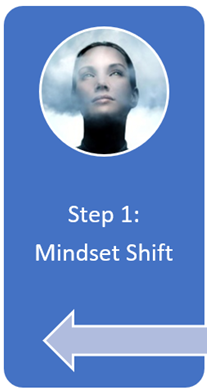
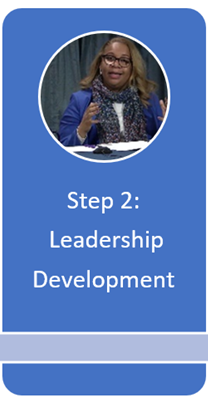
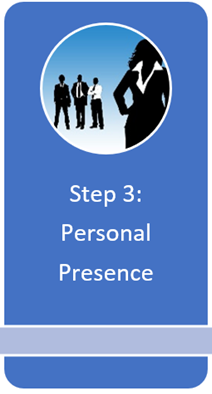
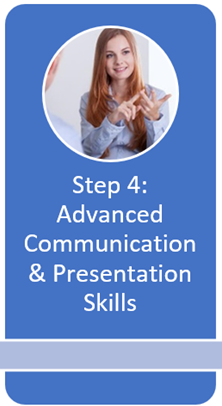
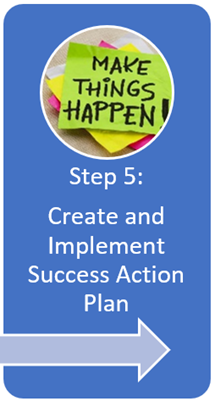
The second workshop in our Women Empowerment Program – Empowering Beliefs continues to work on developing a positive shift in our mindset.
Many women professionals have a limited or a negative belief system that prevents them from reaching their desired level of success in their life and their career.
During this workshop, through the impactful training and exercises; we will identify what a belief system is while assessing our own, acknowledge any limiting beliefs we have, and go through a transformational process to let them go. We will take a deep dive into how fear may be keeping us stuck and what we can do to conquer it. We will learn how trauma can also play a role in our lives negatively impacting our mindset and sabotaging our success, we’ll discover how to navigate transition effectively and finally discover powerful positive thinking techniques. By the end of the workshop, the women on your team will be equipped with an empowered belief system allowing them to reach their goals and show up as a powerful and confident leader.
How this will be achieved, is by implementation of the following strategies:
1. Engage and elicit expectations for the course, becoming conscious of our current belief system.
2. Identify most common limiting belief and go through the Allowing Process to eliminate it.
3. How to establish a work atmosphere that fosters positive attitudes.
4. Breaking through resistance with the Letting Go Process.
5. Face fears with career goals with 5 Step Conquering Fear Method.
6. Identifying trauma – retraining the mind.
7. Creating a standardized commitment process to stay consistent in your actions.
8. Committing to more Focus and strategies to incorporate this focus in your life and career.
9. Stages of Change Exercise.
10. Leadership beliefs and leadership style assessment.
11. Positive Thinking techniques and how to implement them.
12. Creating our personal Power Statement representing the new version of ourselves that we’re stepping into.
Resources:
Great Meditation for Creating a Wealth Mindset – The Soul of Wealth Meditation by Carrie Bush
https://www.audioacrobat.com/play/W2DW3vyk
More on Overcoming Fear – Inspiring Stories – Overcoming fear: Celebs share inspiring stories about overcoming fear (today.com)
More on Trauma – The Inspired Performance Institute – www.inspiredperformanceinstitute.com
More on Consistency – Check out this great book – The Power of Consistency – Prosperity Mindset Training for Sales and Business Professionals by Wheldon Long The Power of Consistency: Prosperity Mindset Training for Sales and Business Professionals: Long, Weldon: 9781118486801: Amazon.com: Books
More on Focus – Suggested Read – The One Thing – The Surprisingly Simple Truth About Extraordinary Results – By Gary Keller and Jay Papasan – The ONE Thing: The Surprisingly Simple Truth About Extraordinary Results: Keller, Gary, Papasan, Jay: 9781885167774: Amazon.com: Books
More on Navigating Transition – The Transtheoretical Model – Behavioral Change Models- Table of Contents (bu.edu)
Case Study on Organizational Change- Employee Resistance To Organizational Change: A Case Study Of Telenor: [Essay Example], 2327 words Grades Fixer
Powerful Case Study on Women in Leadership – Women in Leadership: A Comparative Case Study on Successful Leadership (umb.edu)
Put a Preliminary Plan in place:
Important questions that should be asked (but not solved just yet). The following are some of the questions the leaders should ask:
• “Which departments, branches, or business units will be piloted first?”
• “How do we position the program?”
• “What are the participants’ primary concerns?”
• “What are the most likely stumbling blocks or areas of resistance?
Course Manuals 1-12

Course Manual 1: Belief System
“The mind is everything. What we think we become.” (Buddha)
It’s all about your belief system. You become what you think and believe.
Your belief system is what influences how you think and feel. Whether you’re melancholy, joyful, sad, thrilled, or bored is determined by your belief system.
Your courage, fears, and behaviors are all determined by your belief system.

Understanding Your Belief System
You can simply examine your life to see your belief-system at work, as reflected in your level of success, your health, wellbeing, and the quality of your relationships.
Your belief system — the ideas you have and the “facts” you take for granted — is your “auto-pilot.” It is the source of all the good things in your life, including love, joy, money, and pleasant surprises, as well as all the drama, conflict, frustration, stress, and other unpleasant experiences.
There is a gap between the stimulus and response. We have the power to pick our response in that area.
In other words, between something happening to us and our reaction to that event, comment, or action, we transit through our belief system, although rapidly and without much awareness.
Understanding and learning to “catch ourselves” when we are reacting in habitual ways is essential for change. We learn that we are not victims of our emotions and that we cannot blame our actions on drugs, alcohol, or other influences like culture or peer groups. We also learn that we are not “victims” of some hard-to-reach subconscious — everything is available to us consciously if we remember to catch ourselves responding consistently, especially those responses and feelings that we fear or wish to avoid.

Awareness
Contact, sensing, excitement, and gestalt formation are all characteristics of awareness. Being fully in contact with reality is required for awareness. The nature of awareness is determined by sensing: whether it is distant (e.g., vision or sound), close (e.g., touch), or internal (e.g., muscular sensations or mental phenomena such as dreams and thoughts). The arousal of interest and emotion, towards excitement, heightens awareness.
The desire to form a gestalt is always present alongside awareness: to focus attention within a field of information so that a meaningful organized whole emerges. During this search, a foreground item or figure stands out from its context or background.
Greater awareness results from a free embrace of the various possible relationships inherent in a field, so that more and more meaning is integrated towards a realization of truth, most often a simplicity; lessened awareness results from fixation on any one aspect.
This belief system is what we’re aiming to transform, and it’s something that is most likely utterly invisible to us. Here’s an example: A joke is spoken by someone. One individual is chuckling at the joke and considers it to be a beautiful insight and a humorous remark on life. They are having a good time. Someone else is offended when they hear the same joke, at the same moment, by the same comedian. One of them interprets it according to their own interpretation, resulting in a sensation of laughter, joy, and insight. Someone else has been insulted in the past. They are in pain. They feel betrayed or whatever the case may be. The situation remained the same. What caused one person to have experience A while another had experience B? The response is based on each person’s perception of the joke’s meaning. The experience is defined by their perception of the joke and how they apply it to the world. Their interpretations were fundamentally different. But that interpretation happened very quickly, and we were unaware of it.
Are we conscious of how we interpret a joke when we hear it? Are we conscious of our part in understanding a comment that offends or hurts us in the moment? Then we react, becoming annoyed or angry. We became irritated when they mentioned something. We laughed when they said something. We are oblivious to the fact that something has occurred within us first. The belief system resides in that unseen, quiet mechanism. It elicits reactions from us. We don’t stand a chance if we want to live in the world and be happy, yet I have a belief system that produces anger, frustration, judgments, victimization, and unhappiness.
We’re not even sure where the reactions are occurring. We can only see that they said something, so it had to be them. This is because, until we start looking for it, the belief system is largely unseen and silent.
Until we truly begin to observe time from a conscious standpoint, asking ourselves, “What’s going on in that moment between something being spoken and my emotion or the responsive words in my mind?” “What goes on in there?” That is significant since it is what determines our life experience. That is what is shaping our current emotional experience. This emotional experience of life, be it happiness, misery, or suffering, is caused in part by something unseen. I look at what appears to be an invisible process of a belief system that is interpreting life in that neglected zone. This necessitates an intentional and determined effort.
Belief Systems operate in ways that are invisible to us while we are unaware of them.
Most people look beyond themselves and say things like “Oh, you irritate me” or “That’s sad” or “OK, that’s very beautiful,” or “You’re awesome.” They believe they are simply reacting to something outside of themselves. “You made me feel that way,” they’re thinking. That’s why I’m feeling this way because of what you did.” This is the mental habit of taking a victim mentality and blaming other people or events outside of themselves for the emotions they are experiencing.
This is the surface level comprehension, not noticing, of the interpretation and meaning that the belief system applies to experiences, and it is what is changing everything. Our bodies require 12-14 years to grow to the point where we may reproduce. It is in t For some, it may be much later or never. The mind develops at a higher rate early in life. At some point between the ages of 30 and 50, consciousness awakens and asks, “Hey, what’s going on in my mind?”
The mind does not have the ability to perceive the mind clearly, but consciousness does.
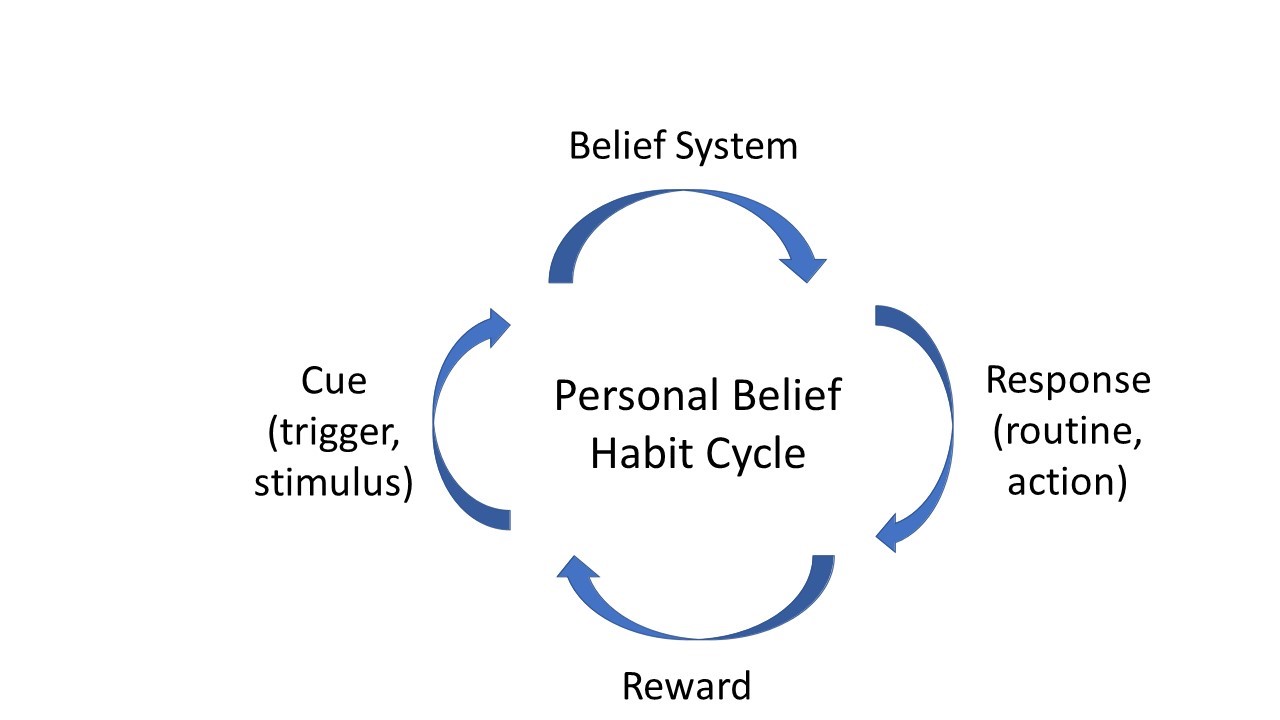
You begin to examine yourself and what’s going on in your mind from the perspective of consciousness, you’ll discover the mind making interpretations you weren’t aware of before. You start to notice all of these things going on in your thoughts, and you realize it’s all automatic. These are the things we’ve been programmed to do. Making the interpretation, applying meaning from a belief system, is what it is all about. It’s a natural reaction to be offended or furious. That’s something you’ll notice happening on its own. What’s the deal with that? That’s absolute nonsense. All those uncontrollable, negative thoughts or worry appear insane from a conscious standpoint. It’s out of place and unneeded from the standpoint of consciousness.
We’re working on developing our consciousness, or awareness, which has been gestating in this human form. That takes a long time. With workouts and a strong commitment, you may accelerate your development and actively practice it. If you practice being conscious, whether through meditation or other techniques that I or others teach, you will grow consciousness more quickly. Through workouts, you’re essentially strengthening the muscles of your consciousness and attention.

How Can Your Belief System Affect Your Health

For the past 30 years, research has consistently demonstrated that your beliefs, rather than diet, exercise, or genes, are the most important factor of your health. Dr. Herbert Benson states “We now have scientific proof that the mind (beliefs) can heal the body. This means that you have the innate ability to self-heal diseases, prevent life-threatening conditions, and supplement established drug and surgical procedures with mind body techniques that can improve your physiology, biochemistry, brain functioning, and genetic activity.”
How we handle food, diet, nutrition, exercise, sleep, stress, rest, and play is largely determined by our belief systems. Even the notion that one’s beliefs can enhance one’s health can be consoling and therapeutic to individuals suffering from illness. On the other hand, “A 12-year research of almost 7,000 participants found that those who had health anxiety at the start of the study were nearly 70% more likely to develop heart disease than those who did not. Furthermore, the researchers discovered that the higher the anxiety level, the greater the risk of heart disease.”
Seven of the nine factors discovered to be common among those who recovered from “terminal” (untreatable) cancer are belief-system based.
Having a strong belief and conviction in your health (rather than wishful thinking) can motivate you to take the steps necessary to improve your health (or in some cases when fears, depression and negative thoughts dominate, your belief-system will generate ill-health).
“You were born free like water. But then you were directed into a canal (belief system). At some point of life, you must break away from the canal and find your own banks, your own truths.” – Shunya

Steps to Changing Your Belief System
Changing your belief system is primarily motivated by your desire to do so. The first step has been taken.
It’s not for naught that we’ve been told for hundreds of years that desire and faith are required to obtain “anything you desire.”
Your belief system is part of your thoughts, as well as your deep-seated emotions, loves, dislikes, opinions, anxieties, and so on.
Your belief system influences even your sense of smell. When people are hypnotized, they can believe that an onion tastes and smells like an apple, and that they can eat that onion as if it were an apple.

Unpleasant Thoughts
The fear of our personal safety, wellbeing, health, and financial situation, as well as our fear or belief that we’re not as good, moral, strong, virtuous, wealthy, or beautiful as our partner, family, friends, and the wider community want or expect us to be, are the most common causes of “unpleasant thoughts.”
To put it another way, unpleasant thoughts are frequently our fears of disappointing ourselves (failing), disappointing others (and maybe “hurting them”) or being scorned for not conforming to existing cultural standards and expectations.
As a result, the first step towards “stopping” unpleasant thoughts is to talk to individuals whom you believe you will disappoint or let down. In most cases, they will alleviate your fears, and so the worry will vanish. Alternatively, talk to a trusted confidante who will remain nonjudgmental and help you reclaim your sense of belonging.
Everyone has a vested interest in helping you be a valuable and loved member of your connections with partners, family, groups, work, and community since we’re all in this together.
Others’ small-minded views, worries, or expectations about you may be the source of some “unpleasant thoughts,” such as shame and guilt. In that situation, their negative feelings toward you suggest that they require more assistance and understanding than you.
Knowing this can help to alleviate “unpleasant thoughts” caused by others’ condemnation, as their disapproval frequently speaks more about them than about you.

Feeling That You Don’t Fit In
As a result, as we begin to become conscious and shift our belief system, we may feel a little estranged. We may feel isolated. We are no longer able to interact with others in the same manner that we formerly did. “What am I doing?” we begin to question. “Is this all, right?” Hopefully, we have enough awareness to check in and say, “I could do their story, but that’s misery.” “I’m afraid I won’t be able to do it.” That’s the insane thing, to go live in one’s head or in stories of misery that say, “It’s someone else’s fault.” We move forward, and we have faith in our ability to do so.
We will have anxieties and doubts about our growth if we believe what our friends and family say, if we listen carefully and examine it. We can even try to turn off our consciousness and put it to sleep again. This is similar to the scene in the movie The Matrix where Cypher want to return to the Matrix.
Sometimes, a relationship does not work out on its own. You gradually start searching out new interactions in that altered state of consciousness, and you talk to people on a conscious level about this thing called the belief system, or mind, or whatever title you find for it that you’re unwinding and discovering.
It’s cool that you have a conscious dialogue about what the mind does unconsciously.

How to Transform Your Thinking
It’s better to think in a way that gets you what you want and is appropriate for you. Imagining what you want is the initial step in this process. Then there are a few measures to do in order to make your dreams a reality.
Begin by picturing what you want, as described in the preceding question. Then begin to act in accordance with those desires. Be on the lookout for “downward causation” – cultural expectations in the shape of people who will try hard to keep you where you are (in order for them to remain comfortable, profitable, in control etc.). “Downward Causation” is a living process that condenses infinite possibilities into a smaller number of probabilities from which we choose our reality.
(In philosophy, downward causation is a causal relationship from higher levels of a system to lower-level parts of that system: for example, mental events acting to cause physical events. The term was originally coined in 1974 by the philosopher and social scientist Donald T. Campbell.)
If you don’t let your habits control what you do and experience, you can change. Change, as previously stated, begins with envisioning what you want and then taking physical action in accordance with that new “you.”

Exercise 2:1: Becoming More Aware

Course Manual 2: Limiting Beliefs
“Beliefs have the power to create and the power to destroy.” Tony Robbins
This course module focuses on finally addressing the blocks and barriers that may be holding us back from reaching our true potential. We will go through a powerful process that will allow you to reveal and recognize these blocks and learn how to breakthrough and let go of all limiting beliefs.
Do you have any goals you would like to achieve? You may wish to enhance your profession, get a promotion, discover love, or strengthen your relationship, exercise, and reduce weight, or begin healthy routines. We all have desires in life, and growth is a powerful human need.
So, what’s holding you back?
Any response you provide to that question is an excuse, not a fact. That is the simple truth. The only thing holding you back are your own self-limiting thoughts.
We don’t have a filter when we’re kids, so we see the world as it is. As we experience everything for the first time, we are free to approach life without prejudices or opinions.
However, as we become older, we start to establish beliefs that give our lives shape.
Some of these ideas are beneficial – they prevent us from saying something improper in a meeting or crossing the road without looking both ways – but many of the beliefs we create over time are self-imposed limitations that can negatively affect our lives.
These are what we refer to as limiting beliefs.
What are limiting beliefs?
Limiting beliefs are those that prevent us from renewing ourselves or growing.
We all have ideals, and we all fall short of them at times, but limiting beliefs tell us that we will never accomplish our ideals or reach our full potential. We must have faith in our ability to attain our goals, no matter how enormous or daring they appear to be.
On the other hand, imagining that facts aren’t what they appear to be can devastate our lives. As a result, believing that a reality is not a fact is a limiting belief because it inhibits us from dealing with the actual issue, we must deal with in order to attain our goals.
As a result, we are perpetually torn between having trust in our goals and confronting the harsh realities that lie between where we are now and where we ideally want to be.
If you can’t maintain this paradox as you mature, you’ll most likely fail and fall prey to erroneous, restricting notions.

Examples of Limiting Beliefs
The either/or dichotomy, which is a false dichotomy, is a good illustration of a limiting belief.
“I must do one thing or another,” for example, is a common manifestation of this limiting thought, when it is feasible to accomplish “one thing and another.”
For example, you may enjoy teaching health, but there is always more to learn about wellness because the field of healing and wellness is vast and would take many lifetimes to master and exhaust.
One reaction to this would be to believe you don’t know enough to begin and hence feel like an imposter.
The limiting belief here is that in order to begin teaching wellness, you must know everything about it; else, you would be an imposter. This is a form of perfectionism that will prevent you from ever starting because you will never know everything there is to know about wellness.
Instead, evaluate whether you can teach wellness without knowing everything there is to know about it without appearing to be an imposter.
To do so, you must accept the above paradox (also known as the Stockdale paradox), which states, for example, “I am the best wellness teacher in America,” as well as the harsh reality that “There is an immeasurable amount of knowledge to master in the universe of wellness, and I’ll never know it all.”
You can begin without having complete understanding of wellness by accepting the notion that wellness is an infinite body of information that no one can master in a lifetime.
Surprisingly, perfection is more often than not, a limiting belief. Nonetheless, you must have some knowledge to begin. You must confront the harsh realities and put in the necessary effort, at the very least to get started. And how much is adequate is decided by society and what society declares to be sufficient.
Perhaps you need to attend some classes, become an expert, obtain a license, intern, apprentice, or research anything.
So, in this situation, you’d take your cues from society as well as your personal standards—enough for you to be able to begin, albeit imperfectly.
As a result, you can see that in order to get started, you must be willing to be both defective and perfect at the same time!

How are Limiting beliefs formed?
In brief, limiting ideas are established as a result of our life experiences, and some of the most strong of these were formed while we were young.
They begin in our interactions with others, when we become frustrated because I make a mistake or don’t perform something as expected of us.
Such experiences have meaning for us, which causes a physiological and emotional response.
The body keeps track of the score, and the human brain wants to prove that we are accurate, so we hunt for evidence to back up our self-perceptions.
“Performance equals Potential minus Interference.” – Timothy Gallwey
Personal Limiting Beliefs
Many individuals often have negative thoughts or beliefs about themselves. These beliefs are very disempowering and will most likely sabotage your success or prevent you from reaching your true potential.

Your belief system really dictates everything that you do. It really can have such a, a negative impact or a positive impact on your life depending on how you’re operating.
Have you ever gotten so close to a goal, but for some reason you just couldn’t reach it, or you may wonder why you procrastinated? You have this big to-do-list, and you have your goals sorted and you know what you want to do, but you’re procrastinating and you’re not getting it done. Can you relate to any of these statements? Chances are you can, and this is most likely the result of limiting beliefs.
I want to share a little bit about my story and how this was, so prevalent in my life and how I discovered how limiting beliefs were impacting my life. So, I’ve always been pretty goal oriented and very determined, and confident person – I believe I was born that way. But what I had noticed in my business about 20 years ago, while working my plan and getting after it I was feeling like everything was such a struggle.
I tried to stay positive thinking I’m going to push through and continue to work towards those goals. But why does it feel so hard? It felt like I was pushing a rock up a hill. Everything felt so difficult and even though I was strong and determined that I can do it, after a while, it was absolutely exhausting. What I had realized was that I was following all the gurus, you know, seeing, okay, who’s successful in what I wanted to accomplish. I thought- I’m going to follow them and do what they’re doing.
The problem was, I was focused on what I felt like I needed to be doing versus what I wanted to do. So, my belief was I have, have to do it this way to get the results, because this is how everybody else is doing it. Right? So, I convinced myself that that was my truth.
And that’s why I struggled, uh, because I believed that to be true. Since then, I’ve done a lot of work on myself and realized that we get to decide how we want to do things and how we want to live our lives. We can choose ways of doing things that are in alignment with our true self, with our passion, and our purpose, our natural way of doing things. Choose things that are fun versus things that are forced and unnatural. And when you’re able to make that shift focusing on what you want versus what you think you need then you can tap into flow and abundance.
Over the last ten years, I’ve had the opportunity to run my business in a way that is authentic and genuine to me. A way that is fulfilling and fun. Focusing on what I love to do, what I’m super passionate about.
I’m going to share with you a powerful process to help you first identify what limiting beliefs might be keeping you stuck might be keeping you playing small or preventing you from reaching your ideal level of success.
And then we’re going take a look at like, how is that really impacting you and then go through a process to help you release and eliminate those negative beliefs, so you can create room for new healthy and empowering beliefs.
How does that sound?

7 Common Negative Beliefs
There are seven common negative beliefs. Now these by any stretch are not the only limiting beliefs but they are the most common. So, I’m going to address go through those one at a time so you can think about each and see which ones that you feel you resonate with the most. Feel free to write these down.
• The first, most common negative belief is – I can’t do it.
Maybe other people are doing what you want to do, but you’re feeling like you’re unable to.
You can’t do something that you aspire to do or would like to do.
• The second negative belief is – I’m not good enough. Now this is a biggie. Often this one is adopted at an early age. Maybe you were told by a family member or significant other a young child or even young adult that you weren’t good enough.
• The third one is – I’m not worth it. Maybe, you have never been successful. So, you feel like you’re not worthy of being successful.
• The fourth one is – I’m alone. Now being a success -minded professional woman absolutely can feel very isolating. And a lot of times people don’t understand where you’re coming from. You may often feel like you’re doing this all on your own and have no support.
• The fifth one is – What if? What if I go to that networking event and get out there and talk to people and I make a fool out of myself, or what if I go on stage and, you know, speak to this group of people and I make a fool out of myself. The truth is, “what if” actually works both ways. Because, what if you get on that stage and connect with the right people and rock it and change lives? I’m going challenge you if, what if you are telling yourself, what if I fail? What if I do this and screw up? What if I make my offer to someone and they reject me. Then, think about what the opposite of that would be for you. That’s an easy way to shift that belief.
• The sixth one is – I have no direction in my life. This is a big one with women professionals because there’s so much information out there and so many things to do. We often just get stuck in information overload. Not knowing what the next best step to take in your life.
• The seventh one is – I’m afraid. I’m afraid of rejection. I’m afraid of failure. This is very, uh, closely related to fear, right? Fear is the one big thing that keeps us stuck.
So, those are the seven negative beliefs. Chances are, you’re struggling with at least one of these and do on a regular basis.
Re-cap of the 7 most common “Negative Beliefs”
1. I can’t do it.
2. I am not good enough.
3. I am not worth it.
4. I am alone.
5. What if…. (usually relates to a fear of foreseeing a negative outcome)
6. I have no direction in my life.
7. I’m afraid.

Case Study
A salesperson found herself struggling financially and working really hard to make money in her career. She was discounting her company’s products and services and panicking about money. We discovered several limiting beliefs that held her back, including “I am not worthy of success”. Once these beliefs were addressed, she reached her targets for the first time, and started to exceed them within a couple of months. She also started to attract higher quality clients, her income increased significantly, and she created a much better work life balance.
(Source: https://www.qttransformation.com/how-limiting-beliefs-limit-career-and-business-success)

Making It Personal
Think about your current situation in your career. What belief is showing up? It all starts with a belief and with a belief comes a thought with a thought comes a feeling, and then that feeling leads us to taking an action or sometimes not taking action at all but instead being stuck.
And then with actions, we can get results. This is how our beliefs will impact ultimately the results in our lives and careers. That’s why it’s so important to get this squared away.
So, again let’s think about our current situation in our career. Discern what is coming up, what beliefs or thoughts, especially feelings are coming up for you right now. Are you feeling overwhelmed? Are you feeling stressed out or fearful? Um, what did it, what is it for you? Then think about the one thing keeping you from moving forward in your career, or one thing, keeping you from getting the results you desire in your career. All right, now focus on the feelings that are showing up for you. What is actually happening in the mind is the mind is contracting.
When the mind contracts, we are no longer able to tap into our creative mind and no longer able to problem solve and no longer are we able to know what the next best step is to take on our career path. A big factor here is that you will be really unattractive to anything that you want to attract in your life. So, in essence, you are paralyzed, you’re stuck, you’re unproductive and like a repellent to anything you want to create or attract in your life or career. That is contraction. What we want to do is move into expansion and we’ll talk about expansion in a moment.
All right, so now we’re going to go through a powerful process to help you Eliminate these limiting beliefs it’s called the Allowing Process. We’ll walk through how to actually shift from a negative state of being into a positive state of being moving from contraction to expansion.

Allowing Process
Step 1: Start by getting comfortable in your chair, put your hands on your lap, shoulders down and back. And I want you to take some deep breaths and concentrate on the feelings that you’re feeling when you’re thinking about why you’re not able to get the results you desire in your career right now. Really think about it. How are you feeling? Are you feeling stressed? Are you feeling overwhelmed? Fearful? Think about the common, negative beliefs we just went over, what one is coming up strongest for you? Focus on that. Then, think about those feelings and start breathing into those feelings. As you’re breathing into those feelings, I want you to accept the fact that you’re feeling that way. Okay? So, we’re acknowledging and recognizing it first, but then you’re accepting those feelings and welcoming those feelings into your being.
Keep taking those deep cleansing breasts, focusing on those negative feelings. Okay? I want you to keep doing this, take those cleansing breasts, focus on those feelings until all of a sudden, they become a little bit lighter. Continue to do this. Now. Sometimes it works pretty quickly. Sometimes you’re going to have to do this for several minutes. Now, for time’s sake, I’m going to walk you through it a little bit quicker, but keep in mind, you’re breathing into these feelings, welcoming them into your being, accepting them into your being.
Step 2: Ask yourself, can I let these feelings go just for now? Your mind will be like, no, I got to hold onto them! So, you can reason with your mind and say just for now, can I let these feelings go? Next, you’ll want to get to that place where they’re light enough or you can temporarily let those feelings go.
Then, ask yourself this, “What if I can have what I desire? “What would be the ideal outcome that I’m going for here”? Or probably, what’s the opposite of where I’m at right now. Start thinking about what you want to create, what that ideal outcome is. Close your eyes and visualize what that’s going to look like. And then I want you to think about how you’re going to feel once you get there. Are you going to feel joyful? Peaceful?
Address the feelings that are showing up when you’re thinking of yourself already at your end goal.
Step 3: Then, with those new feelings, I want you to start breathing into those new feelings and start recognizing those new feelings that are there. And then I want you to start welcoming those new feelings into your being, take those deep cleansing breaths. Focus and concentrate on those positive feelings and continue to breathe deeply as you now accept these new feelings into your being. Keep breathing, keep breathing and focusing on these feelings and then what’s going to happen. And again, this can take a little bit longer, but we’re going to move through it. What will happen is you’ll be able to move from that contraction, that contractive state, where you’re stuck, feeling paralyzed, uncreative, and unproductive, to being able to focus on the positive feelings, you’re going to expand your mind.
All of a sudden, you’re able to tap into creativity again. You’re now going to be able to tap into your problem-solving skills. You’re going to know what the next best step will be to take towards your career goals. Maybe not the full picture, but the next best step. And once you take that step, you’ll know the next best step and so on and so on. And the most amazing part of this is you’re going to be incredibly attractive to the people around you and to opportunities that are going to support you and your goals in your career. As you can see, we are our beliefs. How we’re feeling in any given moment will impact who we are being. This is your state of being.
It’s important to make a conscious effort on a regular basis to check in and see where you’re at in terms of your state of being, are you focusing on negative things or are you focusing on positive things because that will really impact the results that you’re getting in your life and career.
“We don’t get what we want, we get who we are.” – Myron Golden
Your state of being is the #1 thing that will impact your decision making and your results!
How to Overcome or Eradicate Limiting Beliefs
You may entirely eradicate your limiting beliefs and become the person you were born to be with enough sincerity, passion, honesty, and internal motivation.
This is what great people throughout history have done—not just great spiritual leaders like Buddha, but thousands of others like Julia Child, Dolly Parton, Shakespeare, Goethe, Cervantes, Martin Luther King, and thousands more we’ve never heard of because their passion was to live a deep, sincere, modest life, unconcerned with the public eye, realizing their true self by tending to their community, friends, or family.
Action is the most effective technique to eradicate a limiting belief
You can start to overcome the ideas you’ve forced on yourself by asking yourself uncomfortable questions, focusing on generating alternative beliefs, and actually putting your views to the test.
Limiting beliefs thrive on inaction, so if you don’t act, you’re merely demonstrating that you’re hampered by some underlying, limiting thoughts.
It’s important to no longer see the numerous instances where the limiting belief is incorrect.
We can reinforce our limiting beliefs, making them stronger and stronger — to the point that we start to doubt them and take away their power.
These beliefs are important because they offer us confidence in how I should act and what I should avoid.
The only thing we tend to forget is that it’s only our twisted perspective – usually of a single past experience.
It’s easy to demolish any restricting ideas in a matter of seconds with nothing to lose and everything to gain by following a few simple steps. Believe in yourself, confront the harsh realities, and take action, and your goals and dreams will come true.

Exercise 2:2: Letting Go of Your Limiting Beliefs

Course Manual 3: Attitudes and Behavior
“Weakness of attitude becomes weakness of character.” – Albert Einstein
Everything we do at work, from our relationships with coworkers to finding new prospects for promotion, is influenced by how we act. Our professional reputation and career can be boosted just as much by our attitude and behavior as by our talents and expertise.
Attitude, appearance, and manners all contribute to professional behavior in the job. It encompasses the manner in which you speak, seem, act, and make judgments.
Attitude: “A generally persistent arrangement of beliefs, sentiments, and behavioral tendencies toward socially relevant things, organizations, events, or symbols” is what an attitude is defined as (Hogg & Vaughan 2005). “A psychological trait characterized by a preference for or dislike for a certain entity” (Eagly & Chaiken, 1993).
According to Wikipedia, In psychology, attitude is a psychological construct, a mental and emotional entity that inheres in or characterizes a person. It is complex and is an acquired state through experiences. It is an individual’s predisposed state of mind regarding a value, and it is precipitated through a responsive expression towards oneself, a person, place, thing, or event (the attitude object) which in turn influences the individual’s thought and action. Most simply understood, attitudes in psychology are the feelings individuals have about themselves and the world. Prominent psychologist Gordon Allport described this latent psychological construct as “the most distinctive and indispensable concept in contemporary social psychology.” Attitude can be formed from a person’s past and present. Key topics in the study of attitudes include attitude strength, attitude change, consumer behavior, and attitude-behavior relationships.
Behavior: The manner in which one acts or behaves.
Wikipedia shares: Behavior (American, English) or behaviour is the range of actions and mannerisms made by individuals, organisms, systems, or artificial entities in conjunction with themselves or their environment, which includes the other systems or organisms around as well as the (inanimate) physical environment. It is the computed response of the system or organism to various stimuli or inputs, whether internal or external, conscious, or subconscious, overt, or covert, and voluntary or involuntary.
Individuals, creatures, systems, or artificial things engage in a wide range of behavior and mannerisms in connection with themselves or their environment, which includes other systems or species nearby as well as the (inanimate) physical environment. It’s the system’s or organism’s calculated response to numerous stimuli or inputs, whether internal or external, conscious, or subconscious, overt or covert, voluntary or involuntary.
In his article Attitudes and Behavior in in Simply Psychology, Dr Saul McLeod shares the structure of attitudes.

Structure of Attitudes
Attitude’s structure can be described in terms of three components.
• Affective component: this involves a person’s feelings / emotions about the attitude object. For example: “I am scared of spiders.”
• Behavioral (or conative) component: the way the attitude we have influences on how we act or behave. For example: “I will avoid spiders and scream if I see one.”
• Cognitive component: this involves a person’s belief / knowledge about an attitude object. For example: “I believe spiders are dangerous.”
This model is known as the ABC model of attitudes.
One of the underlying assumptions about the link between attitudes and behavior is that of consistency. This means that we often or usually expect the behavior of a person to be consistent with the attitudes that they hold. This is called the principle of consistency.
The principle of consistency reflects the idea that people are rational and attempt to behave rationally at all times and that a person’s behavior should be consistent with their attitude(s).
Whilst this principle may be a sound one, it is clear that people do not always follow it, sometimes behaving in seemingly quite illogical ways; for example, smoking cigarettes and knowing that smoking causes lung cancer and heart disease.
There is evidence that the cognitive and affective components of behavior do not always match with behavior. This is shown in a study by LaPiere (1934).

Strength of Attitudes
The strength with which one holds an attitude is generally a strong indicator of one’s actions. The more powerful the attitude, the more likely it is to influence behavior. Attitude strength entails the following:
Personal relevance/importance refers to how important an attitude is to a person’s self-interest, social identification, and value.
It will be particularly essential if an attitude has a high self-interest for a person (i.e., it is held by a group that the person is a member of or would like to be a member of, and it is related to a person’s values).
As a result, a person’s attitude will have a significant impact on their conduct. An attitude, on the other hand, will be unimportant to a person if it has no bearing on their lives.
The knowledge component of attitude strength refers to a person’s understanding of the attitude object. People are generally more knowledgeable about issues that interest them, and as a result, they are more likely to have strong opinions (positive or negative).
Attitudes acquired by direct experience are more strongly held and have a greater influence on behavior than attitudes formed through indirect experience (for example, through here-say, reading or watching television).

The Function of Attitudes
Attitudes can serve functions for the individual. Daniel Katz (1960) outlines four functional areas:
Knowledge:
Attitudes give life significance (knowledge). The knowledge function relates to our desire for a world that is predictable and stable.
This offers us a sense of control by allowing us to foresee what is going to happen. Attitudes can aid in the organization and structure of our experiences.
We can forecast a person’s behavior by knowing their attitude. Knowing that a person is religious, for example, we may predict that they will attend church.
Self/Ego-Expressive:
Our views (1) help others understand who we are, and (2) may make us feel good since we have proclaimed our identity. Nonverbal self-expression of attitudes is also possible: consider a bumper sticker, cap, or T-shirt statement.
As a result, our attitudes are a part of who we are, and they allow us to be conscious by expressing our sentiments, ideas, and values.
Adaptive:
Other people will reward a person with praise and social acceptance if they have and/or express socially acceptable attitudes.
For example, when people praise their bosses or instructors (and believe it), or when they remain silent when they believe a particular attitude is unpopular. Again, nonverbal expressiveness is possible (imagine a politician kissing a baby).
The adaptive functions assist us fit in with a social group, and attitudes have to do with being a part of one. People seek out those who share their viewpoints, and they adopt the viewpoints of those they like.
Ego-Defensive:
Holding attitudes that safeguard our self-esteem or excuse activities that make us feel guilty is referred to as the ego-defensive function. One-way children could defend themselves against feelings of humiliation they’ve felt in P.E. classes is to develop a strong negative attitude against all sports.
People whose pride has been harmed by a sporting failure may adopt a protective attitude as well: “I’m not bothered, I’m sick of volleyball anyway…” There are psychiatric overtones to this function. Positive attitudes toward ourselves, for example, perform a protective (i.e., ego-defensive) function in helping us maintain our self-esteem.
The functional approach is based on the premise that attitudes assist a person in mediating between their own inner demands (expression, defense) and the outside world (adaptive and knowledge).

Attitude Formation
Now that we know what an attitude is, let’s look at how attitudes are formed and how they influence behavior. Attitudes have an impact on behavioral intentions, which in turn has an impact on actual behavior. When observing behavior, we can frequently discover attempts by the individual to justify his actions. Let’s take a closer look at each of these model elements one by one, starting with the attitude development process.
The dispositional method, advocated by psychologist Barry Staw and others, is one viewpoint.
“Stability in the Midst of Change: A Dispositional Approach to Job Attitudes,” B. M. Staw and J. Ross, Journal of Applied Psychology, vol. 70, no. 4, pp. 469–480, 1985. In other words, attitudes are treated as if they were personality traits. As a result, one may have a tendency—a predisposition—to feel content at work, regardless of the nature of the employment. Others, nearly regardless of the nature of the task, may have an internal inclination to be miserable.
A series of research indicated that people’s attitudes change very little before and after they change jobs, which supports this strategy. To the extent that these findings are valid, managers may have little control over improving job attitudes other than attempting to select and hire only individuals with the right attitude.
The situational method is a second way to attitude creation. According to this viewpoint, attitudes evolve as a result of the uniqueness of a circumstance. They vary depending on the situation and might change in reaction to changing work conditions. People develop appropriate attitudes as a result of their work experiences (a monotonous or unrewarding job, a poor supervisor, etc.). There are several variations on this strategy. According to many experts, attitudes are strongly influenced by the character of the work experience. “I don’t get along with my supervisor,” an employee could say. “As a result, I’m dissatisfied with my job.”
This suggests that attitudes can be modified very quickly to the extent that this truly represents how attitudes are formed. If employees are unsatisfied with their jobs because of problems with supervisors, for example, changing supervisors or modifying supervisor conduct may be feasible options for improving employee job attitudes. In other words, if attitudes are mostly a consequence of context, then changing the situation can affect attitudes.
This is how it goes. Assume a new employee joins a team of coworkers who have known each other for a long period. The current group has already formed thoughts and feelings about the supervisor’s fairness, the workplace’s quality, the sufficiency of compensation, and so on. When a new employee first starts, coworkers provide socially acceptable clues regarding acceptable attitudes toward various parts of the job and firm. As a result, the new employee begins to acquire attitudes based on externally provided bits of knowledge from the group rather than objective workplace traits, owing in part to the current social forces.
Which method is the most effective? Research actually shows that both the dispositional and the social-information-processing viewpoints have value, and it is probably prudent to understand that socially created realities and dispositions interact to build the foundation for an individual’s work attitudes. The implication of this combined perspective for changing attitudes is that systematic efforts focusing on groups and interconnected social systems are likely required for successful changes in attitudes, rather than assuming that minor changes in the situation will have significant impacts on individual attitudes.
Behavioral Intentions and Actual Behavior
The next issue is understanding how behavioral intentions govern actual conduct, regardless of how attitudes are generated (whether through dispositional or social-information-processing approaches).
This clearly is not an ideal relationship. Regardless of one’s objectives, internal and external constraints frequently serve to alter a planned path of action. As a result, even if you desire to join the union, you may be unable to do so due to a variety of factors. Similarly, a person may intend to come to work but become ill with the flu. Other elements that influence real conduct, regardless of purpose, frequently enter the scene.
Behavioral Justification
Finally, people frequently feel compelled to provide behavioral justification in order to guarantee that their actions are compatible with their feelings about the occurrence. This is referred to as cognitive consistency.
When people act in ways that are inconsistent with their attitudes—when they experience cognitive dissonance—they feel tense and try to relieve the tension by returning to a state of cognitive consistency.
A manager, for example, may despise his job but be forced to work excessive hours. As a result, he will likely experience cognitive dissonance due to a clear disparity between his mindset (dislike of the job) and his conduct (working long hours). He can do one of two things to become cognitively consistent. To begin, he can alter his behavior by working fewer hours. This, however, may not be possible. Alternatively, he can adopt a more optimistic attitude toward his work. He might persuade himself, for example, that the job isn’t all that unpleasant and that working long hours will lead to rapid advancement. He gets cognitive consistency as a result of this. Failure to do so will almost certainly result in greater stress and a desire to leave the work.
“Human behavior flows from three main sources desire, emotion, and knowledge.” – Plato

Professional Behavior in the Workplace
Attitude, appearance, and manners all contribute to professional behavior in the job. It encompasses the manner in which you speak, seem, act, and make judgments. The following are the key principles of professional work behavior:
• Respecting your bosses, coworkers, and clients and projecting a good attitude
• Being courteous
• Using sound judgment
• Being ethical
• Dressing in appropriate clothing
Employees who are professional at work are more likely to be productive, motivated, and perform well. Colleagues and clients love working with them, and they may advance to management positions. To advise employees, some organizations establish codes of professional conduct that contain standards concerning appearance and behavior.

10 Methods to Keep Your Professional Behavior at Work
Consider these professional actions that make positive impressions on coworkers and employers if you want to increase your work performance and your chances of career success:
1. Be punctual.
Punctuality demonstrates to your employees that you are dependable, dedicated to your task, and respect their time. Set alarms to ensure you arrive at work on time each day and utilize calendar reminders to stay on schedule for meetings and conferences. Aim to arrive a few minutes early so that you can stay on schedule if you encounter traffic during your trip or need to respond to an urgent email before a meeting.
Make sure you stick to your company’s break schedule as well. Return to work within those time constraints if employees are given an hour for lunch and 15 minutes for breaks.
2. Adhere to your workplace’s dress code.
Maintain a clean and neat appearance that makes a great impression on clients and coworkers, whether your firm has a rigid dress code, allows casual clothes, or you work from home. Examine the company’s dress code and avoid items like wrinkled or ill-fitting clothing, ripped jeans, tank tops, and flip-flops. Because you are representing the company, choose something that appears professional.
3. Be Respectful While Communicating
Clean language should be used at work, even in informal discussions and emails. Avoid gossiping, discussing sensitive topics, and disclosing too much personal information to coworkers. If you must confide in a coworker, do it in a discreet area where customers and management will not be able to hear you.
Speak clearly and courteously during meetings and talks so that others can understand you. When your coworkers’ express ideas, pay attention to them and acknowledge what they say, even if you disagree. When conversing by email, your tone and phrasing are equally crucial. Maintain a professional tone in your emails, as they serve as long-term recordings of talks.
4. Be truthful
Positive relationships can emerge from professional integrity. Coworkers who trust one another are more likely to be productive and work well together. If you require personal time off from work or an extra few days to complete a project, be forthright. Maintain the privacy of company and client information. Report dishonest behavior to your manager if you notice it elsewhere in the office.
5. Maintain a positive attitude
People like working alongside energetic and optimistic coworkers. If you arrive at work motivated and with a positive attitude, your coworkers are more likely to do the same, which can boost general workplace morale. If you face difficulties at work, rather than whining about them, try to fix them. On projects, give positive feedback and support to your coworkers. Congratulate others on their personal and professional accomplishments.
6. Assume accountability
Professionals that are respected set an example by taking responsibility for their activities. If you make a mistake, acknowledge it immediately and take actions to repair it or avoid it from happening again. Avoid blaming others, even if they played a part in the problem. Employees who confess failed ideas, missed deadlines, or poor decisions, apologize, and endeavor to rectify them are valued by their bosses. If you recognize you require assistance with a project or a major decision, ask for it.
7. Stay away from social media
Avoid visiting your personal accounts during work hours, even if your employment requires you to publish on social media sites and watch company platforms. If a coworker or boss discovers you on social media throughout the workday, they may question your productivity. Instead, read social media updates during your lunch break and turn off social media notifications so you won’t get distracted or disrupt others at work.
8. Assist others
When your coworkers appear burdened by chores or are attempting to tackle difficult problems, offer to assist them. Respect their reaction when you ask for their opinion on an idea or assistance with a project. You may raise the entire department by supporting your colleagues and working together as a team. Employees that are supportive team members are also noticed by managers, and they may be considered for leadership positions.
9. Be ethical in your actions
Workplace ethics entails making moral decisions and upholding strong morals. Act in an ethical manner by:
• Understanding and adhering to corporate regulations and procedures
• Violations, suspicious conduct, safety concerns, or suspicious acts should all be reported.
• Personal bias and judgment must be eliminated from your decisions and relationships.
• Taking responsibility for your acts and being accountable
• In order to get support in a difficult situation, you must first ask for it.
• You are more likely to make effective decisions that benefit your entire team if you act ethically.
10. Be dependable
Demonstrate to your coworkers and boss that you can be counted on to fulfill deadlines, deliver high-quality work, and attend meetings on time. When someone asks you to do something, make a commitment to doing it correctly and on time. Review meeting agendas and bring notes and discussion points to meetings. If your boss thinks he or she can count on you to deliver high-quality, on-time work, they may grant you more responsibilities and independence.

Exercise 2:3: Behavioral /Attitude Exercise

Course Manual 4: Breakthrough Resistance
“On the other side of resistance is the flow.” – Guy Finley
Many of us are struggling spending a great deal of time swimming upstream, rather than allowing our life to flow where we want it to go. What if you didn’t have to struggle to get what you want? What if we can use the natural flow of life to support us in having what we desire?
Think about a time in your life when you experienced being in a state of flow or think of a day when everything seemed to go perfectly. You seemed to be in the right place at the right time. Then think of an average day. Which would you like to have? The greatest obstacle to being in the flow all of the time is resistance to what is.
Resistance prevents us from moving ahead in all areas of our life.
Great news- you can let go of resistance just like you can let go of any other feeling.
So, what is resistance anyway?
Have you ever started a project, really giving it your all, and lost enthusiasm somewhere in the middle? That’s resistance. Resistance can be very inconspicuous, but it’s one of the main things that stops us from having, doing and being what we want in life. As a matter of fact, we often resist the things in life that we really like and care about. And if someone tells us to do something that is a sure-fire way to trigger resistance.
Resistance can be self-sabotaging and counter-productive and it appears constantly, because we live in a world of “should” and “have tos” and “must dos.” This stirs up resistance. Anytime you are told you should do something, or you have to do something how do you feel inside? “No way! Don’t tell me what to do!” That’s just the nature of how the human mind works. We simply do not like being told what to do. Yet, we are constantly “shoulding” on ourselves and wondering why we are not getting things done or having fun.
Here are some definitions of resistance that may help you recognize it:
• Resistance feels like you are trying to move forward with the brakes on
• Anytime you feel like you have to, must, or should do anything, you’re in resistance
• Resistance is pushing against the world so it will push back
• The feeling or thought “I can’t” is resistance. It takes a conscious effort (habit) of holding down the feelings; that unconscious habit is resistance.
Resistance is when you haven’t yet decided whether to do something or not, but you do it anyway and it’s difficult. To make this easier you must decide to do it or not to do it.
Follow the process below to help you breakthrough resistance.

Letting Go of Resistance Process:
Step 1 – Allow yourself to welcome the resistance in this moment
Step 2 – Ask yourself 1 of the following 3 questions. Could I let go of this resistance? or Could I allow myself to feel this resistance in the moment? or Could I welcome the feelings of resistance.
Then ask: Would I? When?
Step 3 – Repeat the above steps until you feel free.
Once you truly understand that you can let resistance go, you’ll find yourself doing so without thinking about it very much.
Release on resistance anytime that you feel stuck.
3 Important Tips to Avoid Resistance
Ask, don’t tell – Based on what was mentioned earlier, avoid bringing up unnecessary resistance in others by asking them to do something rather than telling them.
Do what you do and don’t do what you don’t do – Very often, we feel that we should be doing something differently than we’re doing it or that we should be doing something we’re not doing. Remove the “shoulding” on yourself by allowing yourself to do what you’re doing when you’re doing it and to not do what you’re not doing when you’re not doing it. Anytime you find yourself “shoulding” take time to release it.
Ease off the pressure – Does what you’re doing feel hard? This is a clear sign that you’ve hit a wall of your own resistance. You are probably pressuring yourself or feeling pressure from someone else. If you are pressuring yourself, make a conscious effort to take the pressure off. As a result, you’ll often find yourself getting more done, more quickly and easily. Here’s an interesting fact: You can’t feel others pushing you. You can only feel yourself pushing back. So, if it seems that others are pressuring you, let go of your feelings of wanting to push back or resisting their pushes. As a result, you’ll find that whatever you’re doing will be done with much more ease and grace.
As you let go of your resistance in these areas, begin noticing the ease and flow that’s always there, as well as the increased ease and flow that shows up as you let go of resistance. The more you practice letting go of resistance, the better you’ll feel, and the easier life will become.
Resistance can be a major obstacle to having what you want and feeling the way you want to feel. However, you can easily let it go and enjoy the benefits of experiencing ease, grace, and flow.

Conflict in the Workplace
Workplace conflict is costly if left unchecked, costing $359 billion according to one study. Employee conflicts have the ability to disrupt operations, reduce productivity, and harm employee morale, all of which have a negative impact on a company’s bottom line.
Business leadership and human resource management are critical in preventing this from happening. These supervisors are in charge of putting a company’s conflict resolution procedures in place and enforcing them, as well as mediating workplace disagreements, as necessary.
If you want to be a leader in your company or are currently one, putting out fires and averting conflict between squabbling employees will almost certainly fall to you. Managers spend 24 percent of their time addressing conflict, according to research by the American Management Association (AMA). It won’t be easy, but with the correct tools and knowledge, you’ll be able to take it on.
This guide will provide you with eight strategies to help you deal with employee disagreement at work.

8 Strategies to Address Conflict
1. Establish an open-door policy
To prevent conflict from escalating, managers should foster an open communication atmosphere in which employees feel comfortable sharing their concerns with upper management. Implementing an open-door policy is one method to help with this. Employees should feel free to approach management about any important issue without fear of repercussions under this policy. It entails active listening, questioning, and the use of teamwork. Employees will be more willing to reach out if there is a problem if this is in place, which can help prevent confrontations or keep them from progressing further.
2. Assess the Situation’s Seriousness
It’s critical to comprehend the nature and fundamental cause of workplace conflict before attempting to resolve it. Is it a case of misunderstandings, misread details, incompatible personalities, or employee competition? Is it a more serious issue, such as harassment or discrimination? If it’s the latter, it’s an EEOC issue, and your organization should already have rules and processes in place to deal with it. If not, it should be a top priority right now.
Conflict in the workplace can arise for a variety of reasons, and it is unavoidable. It’s critical to go to the bottom of the problem and assess its severity before deciding how to best manage it and prevent it from becoming a continual problem.
3. Encourage employees to solve problems on their own
While it may be tempting to intervene anytime there is office drama to resolve dispute, there are times when it is best to let colleagues hash out their differences on their own. After all, you don’t want to feel like you’re in charge of every office squabble. Allowing them to work together to settle a disagreement can be beneficial to all parties involved.
Remember to monitor and judge when you witness employees having amicable arguments or light political banter. These instances might be chances for employees to identify common ground or engage in productive talks if the arguments do not escalate.
4. Act When It’s Necessary
Some workplace disagreement can (and should) be resolved between the employees involved, as previously stated. Disagreements will inevitably arise, but it is your responsibility to observe and decide whether or not to intervene.
So, how can you know when it’s the right time to intervene?
Here are some examples of when action is required:
• If casual banter turns into bullying, it’s time to take action.
• When a person’s language becomes overtly aggressive, threatening, or menacing
• If there are charges of discrimination or harassment, the following steps should be taken.
• When a team’s production is harmed, or morale is jeopardized by disagreement
• If a teasing conversation turns rude or disrespectful, it’s time to end it.
Of course, you should investigate any employee complaints that come to your attention. No matter how serious the situation is, make sure your staff feel seen and heard.
5. Consider and listen to all of the parties involved
It’s critical to give everyone engaged in the conflict the opportunity to tell their side of the story without being interrupted. Your job is to actively listen, maintain objectivity, and concentrate on each person’s story. The idea is for employees to sincerely listen to one another in order to gain a better grasp of the other side’s perspective. When employees feel acknowledged and heard, they are more likely to come to a peaceful resolution. When you work to listen carefully while you settle dispute, you can keep other employees informed.
6. Keep a record of the incident
When dealing with workplace disagreement, it’s important to maintain note of all talks, disciplinary meetings, and other events. Include the details of any employee-related incident, as well as the resolution reached by both parties. This will allow you to track employee behavior over time and identify individuals who may be harmful to your workplace. It’s also a good idea to keep track of incidences in case an employee tries to sue you.
7. Use the information in your employee handbook to help you
When dealing with office disputes, your employee handbook should be your first port of call, despite the fact that it may seem obvious. This guidebook should serve as a guide to assist you negotiate conflicts and, if necessary, what disciplinary actions to take. Your handbook’s regulations should establish clear guidelines for what constitutes improper workplace behavior. To ensure that there is no ambiguity about what is anticipated, they should offer little opportunity for interpretation. Employees should be aware that disciplinary action will be taken if requirements are not followed.
8. Develop a comprehensive solution
Your responsibility as a leader in resolving workplace conflict is to assist employees in clarifying their requirements and guiding them to a fair solution that both parties can accept. When conflicts emerge, make careful to address them as soon as possible; nevertheless, don’t rush to find a solution.
“Rise to the challenge of bringing your dreams to life! Do not be discouraged by resistance, be nourished by it. Success is the experience of rising to the level of your true greatness.” ― Steve Maraboli, Unapologetically You: Reflections on Life and the Human Experience

Consider the following actions if you find yourself in a workplace conflict:
Recognize the conflict. Encourage employees who are involved in the conflict to have an open dialogue. Make a list of both parties’ interests and what they care about.
Find a point of agreement. Employees often realize they’re working toward the same goal after they’ve worked out their differences. They just have different perspectives on how to get there. It’s lot easier to work toward a solution if you’ve assisted them in identifying a common goal.
Consider all of your options. Gather a variety of conflict-resolution ideas and discuss all viable possibilities in a positive light. Remember, there is no such thing as a bad idea. Discuss the advantages and disadvantages of each idea, looking for win-win situations in which both parties can agree.
Decide on a course of action. Allow the staff to come to an agreement on the best approach to go once you’ve explained alternative ideas. If they are unable to do so, lead them to a solution that they can both commit to.
Check in. After you’ve reached an agreement, it’s a good idea to follow up and check in with the employees involved after a few days or weeks to make sure there aren’t any new issues. If any tweaks or revisions are required, they should be done as soon as possible.
When to Seek Outside Help
While it’s preferable for workplace conflicts to be resolved between management and the employees involved, there are times when human resources should intervene (for example, when an employee and management are at odds). Here are some circumstances in which human resources should be involved:
• Employees are threatening to resign as a result of the issue.
• Employee morale is being harmed by conflicts.
• Dissensions are becoming more personal and disrespectful.
• Workflow is being disrupted, and the company’s prosperity is being jeopardized.
When there are potential legal difficulties, outside assistance should be considered. A mediator, arbitrator, or attorney may be required in the following situations:
• Harassment or discrimination allegations
• When conflicts turn abusive or threatening, it’s time to intervene.
• If HR is unable to assist with conflict resolution due to a lack of resources,
• When a disagreement becomes a pattern, it’s time to take action.
• When several employees are involved, the atmosphere becomes toxic.
Dealing with workplace conflict is one of the most difficult tasks that comes with being a manager or human resources professional. You can help lead your firm toward long-term success by taking the appropriate steps to resolve disagreements.
When we take time to recognize and address resistance as it shows up in our life, we have the power to breakthrough that resistance and tap back into flow, ease and grace again – the state we’re meant to operate in.
“Resistance is the first step to change.” – Louise Hay

Exercise 2:4: Breaking Through Resistance by Gaining New Perspective

Course Manual 5: Overcoming Fear
“I have learned over the years that when one’s mind is made up, this diminishes fear; knowing what must be done does away with fear.” – Rosa Parks
Everyone is afraid of failure or the unknown. However, if you can use fear as a motivator, you will engage in the opportunities that are required to advance your career. Many business professionals are unable to go after their career goals because they are paralyzed by fear. The truth is, there is no way to eliminate fear in your life – it will always exist.
According to Merriam Webster the meaning of FEAR is an unpleasant emotion caused by being aware of danger: a feeling of being afraid.
Eleanor Roosevelt (1884-1962) is one of the most powerful women leaders. She became a leading women politician of her day. In 1921, her husband Franklin, was struck with polio. With that in mind, Eleanor organized Democratic women to help Franklin be elected governor in 1928 and then president four years later. Eleanor was incredibly influential in shaping the Universal Declaration of Human Rights when President Truman appointed her as delegate to the United Nations. She said, “You gain strength, courage and confidence by every experience in which you really look fear in the face. You are able to say to yourself, ‘I lived through this horror, I can take the next thing that comes along.’ You must do the thing you think you cannot do.” She also learned that “No one can make you feel inferior without your consent.”
The only way to grow as a person, a business professional and a leader is to step outside your comfort zone and face your fears, doubts, and the limiting beliefs you have about yourself. The key is to have your why be bigger than the fear. What is your WHY? Why do you want to be successful? It’s got to be more than just about the money. Think of what the money would represent the lifestyle it will allow you to have. When your why is bigger than your fear you will do the thing that scares you most anyway. And each time you do it, I promise you it gets easier and easier.

7 Important Facts About Fear
1. Fear is a good thing.
Fear is encoded into your brain for good reason: neuroscientists have discovered separate networks that extend from the limbic system to the prefrontal cortex and back. Even in the absence of a scary trigger, these networks produce dread when electrically or chemically stimulated. Fear is not pathological nor a sign of weakness: it is a natural aspect of brain function to be terrified. In fact, a lack of fear could indicate severe brain injury.
2. There are numerous types of fear.
Fear is an unpleasant emotion that can range from moderate to paralyzing, depending on the situation—from anticipating the results of a medical exam to learning of a deadly terrorist assault. Terrifying occurrences might leave a lasting impression on your brain circuitry, necessitating professional assistance. Chronic stress, a low-intensity kind of anxiety manifested as free-floating anxiety, continual concern, and daily uneasiness, on the other hand, can slowly but steadily affect your physical and mental health.
3. Fear isn’t as instinctive as you would believe.
Fear is a mixture of instinct, learning, and teaching. Some anxieties are natural: Because of its significance for survival, pain, for example, produces dread. Other phobias are discovered: Because of bad connections and past experiences, we learn to be fearful of specific individuals, locations, or events. A near-drowning experience, for example, may make you nervous whenever you come close to a body of water. Other phobias are instilled: Whether something should be feared or not is frequently determined by cultural standards. Consider how certain social groupings are feared and persecuted as a result of the general perception that they are dangerous.
4. You don’t have to be in danger to feel terrified.
Fear is largely imagined; therefore, it can occur even when there is nothing scary to fear. Indeed, because our brains are so efficient, we begin to fear a variety of stimuli that are neither terrifying nor even present (conditioned fear) (anticipatory anxiety). We are terrified of what we think might happen. Because of our abilities to learn, reason, and manufacture dread in our thoughts, some neuroscientists believe that humans are the most scared species on the world. However, this low-level, objectless worry can develop into persistent anxiety about nothing in particular, which can be devastating.
5. The more terrified you are, the more terrifying things will appear.
If you’re already scared, your fear response is magnified through a process called potentiation. When you’re predisposed for dread, even the most innocuous occurrences might be frightening. A tickling on your neck produced by, say, a loose thread in your sweater will startle you and make you jump out of your seat in horror if you’re watching a video about dangerous spiders. Even the tiniest turbulence will send your blood pressure through the roof of the plane if you are frightened of flying. And the more concerned you are about your job security, the more nervous you will become if your employer summons you for even a routine meeting.
6. Your actions are dictated by your fear.
Fear-related behaviors are divided into four categories: freeze, fight, flight, and terror. Stop doing what you’re doing and concentrate on the frightening stimulus to decide what to do next (e.g., you read a memo that your company will be laying off people). After that, you must pick between fighting and fleeing. You can either deal with the threat directly (explain your boss why you shouldn’t be laid off) or work around it by working around it (start looking for another job).
When fear overwhelms you, you experience fright: you don’t fight or flee; in fact, you do nothing—well, you stress about the problem, ruminate, and grumble, but you don’t act. Being in fright mode all of the time can make you feel hopeless and depressed.
7. The more serious the threat, the more courageous your acts will be.
Real and imagined threats cause us to react differently. The paralysis is caused by imagined threats. You worry a lot but take little action because you’re afraid of all the horrible things that might or might not happen in the future. You’re stuck in a panicked condition, overwhelmed and unsure of what to do. Threats that are real, on the other hand, create a frenzy. You take immediate and unflinching action when a threat is imminent and identifiable. This is why people are far more likely to modify their eating habits after a significant health concern (such as a heart attack) than after simply reading statistics about the harmful effects of a fried-food diet. You must put yourself in risk in order to rouse your troops.
Being fearless doesn’t mean eliminating it. It entails understanding how to use fear to your advantage.
I, Ms. Tull, personally have learned to get comfortable “being uncomfortable.” For example, I do things that scare me and empower me, such as sky diving, trapeze flying, race car driving, zip lining, speaking in front of large groups, shooting videos, investing in myself and my business and my latest is staring in my own Web TV show. I do these things, because over the years, I have learned this is the best way for me to keep up-leveling my life and my business.

Case Studies:
Here are two powerful stories about overcoming fear that I found that clearly depict the act of facing your fears. (3 Inspirational Stories: Overcoming Fear – Inspirational life by Tanya Marie Porras)
The Fear of Vulnerability
Melinda was raised as a leader. Ever since she was little, her father would bring her to the woods on weekends and shared wise leadership advice.
So, as she grew older, she never encountered problems with herself as an authority. She was always the boss, and everyone looked up to her. With her around, projects were always organized and accomplished well.
She always let people see her as strong, and somehow, she feared becoming vulnerable around others. One day, she felt sad. She felt like there was something missing in her life. Sure, she excelled as a leader. She was satisfied with her job, too.
But she realized her job was all she had — no family, friends, or any loved ones. She was always on her own because she was afraid to share pieces of herself with others.
Ever since she was little, she feared being with others. She was afraid to be vulnerable.
She asked herself if a life without loved ones was the kind of life she wanted. And without batting an eye, she knew it wasn’t. So, from that day on, she decided to live differently.
Little by little, she started sharing pieces of herself with the people she encountered. She also took up new interests and hobbies.
It was difficult, at first. She felt like making herself vulnerable to others meant showing people that she was weak. And for someone who showed strength all her life, she struggled.
But soon, she realized showing her vulnerabilities is a way of showing her humanity. Not a lot of people know that she’s also kind, honest, and compassionate.
Because she took steps to show her soft side, people got drawn to her. And years after, she met like-minded people.
When she looked back on her life at that point, she smiled. Her heart was happy with her place in life. She was glad she made a change.
More importantly, she was glad she overcame her fear of vulnerability.
The Fear of Flying
A man named David has never been on a plane. And because he has a fear of flying, he has no plans of changing this.
One day, his father approached him. His old man informed him that his mom was dying. And as much as his father wanted his mother to recover, his old man said it was time to accept the situation and surrender to a higher being.
Upon hearing this unfortunate news and decision, he hugged his father and shed a tear. Then the two men had a conversation.
“Is there anything I can do to ease her pain?” David asked.
“Actually, there is. And it’s also why I approached you,” his father told him.
Then the old man told him about his mother’s last wish. His mother wished to get some fresh air and have a vacation in the Caribbean.
“She can have the vacation. I’ll be happy to pay for it,” he said.
“Thank you, son. Your mother also wants you to come,” his father said.
“No. I can’t get on a plane.”
His father was disappointed upon hearing this and left.
The sight of his father leaving didn’t bother him. But the dream he had that night did.
In his dream, he almost had the same conversation he earlier had with his father. That time, though, he was talking to his mother.
While the words his mother said were similar to what his father told him, his dream had an effect on him. When his mother gently closed the door and left, he felt bothered.
When he woke up, he thought about how his mother was always there for him. He remembered how she never missed any of the important milestones in his life. He recalled the memories of his high school graduation, first car, first house, and more — she was always there.
And when he wanted anything, even if she couldn’t afford it, she was never afraid to find the means to give it to him.
Now it was his turn to be there for her. So, he bolted off to his mother’s room. And without thinking twice about his decision, he told his mother he was ready to board a plane and join her during her dream vacation.
His mother smiled and said:
“I was sad when your father told me you weren’t coming with us for the vacation. It’s disappointing news. But knowing your fear of flying, I understand. What made you change your mind?”
David told his mother about the dream. He also told her that giving up his fear of flying was the least he could do for her.
Shortly after the family vacation in the Caribbean, his mother passed away. And he was glad that while he couldn’t change her fate, he made her happy — and her dream vacation to come true.
Years later, David was glad he got on that plane for his mother. From that moment on, he felt nothing but willingness to see new places and look at things from above. And it was from that moment on he realized his fear of flying doesn’t have power over him anymore.
In a way, it was his mother who gave him the encouragement he needed. If it weren’t for the courage he learned from her, he wouldn’t be as satisfied with his life as he is now.
Both of those stories were a great example of how powerful facing your fears can be.

I have created a formula for you that will help you move past your fears.
Here are the 5 Steps to Conquering Your Fear:
1. First, acknowledge your fear and make the decision to face your fear.
2. Trust that you will get through it and become stronger and more confident because of it.
3. Take action. Do the thing that you are fearful of.
4. Assess your feelings. How do you feel?
5. Celebrate your accomplishment!
Fear truly is an illusion we create in our minds. I once heard it referred to as False Evidence Appearing Real which makes perfect sense.

Exercise 2:5: Facing Your Fears

Course Manual 6: Treating Trauma
“Trauma often shatters belief systems and robs people of their sense of meaning. In so doing, it forces people to put the pieces back together again … rebuilding beautifully those parts of their lives and life stories that they could never have torn down voluntarily.” — Jonathan Haidt, The Happiness Hypothesis
Many of us find ourselves getting in our own way when pursuing our goals. Perhaps we’re trapped in a cycle of Imposter Syndrome or negative self-talk. Perhaps we’ve noticed that fear and anxiety are preventing us from reaching our goals. Or perhaps you can’t put your finger on it, but you know something is holding you back.
The truth is that trauma is defined as anything that elicits an emotional response when recalled. Sometimes it’s a small experience from our childhood that has stayed with us throughout the years. Perhaps it’s an emotional recollection from your adolescence. Whatever the cause, this course serves as a timely reminder that your brain can be rewired and reset. There are steps you can take to ensure that your traumas do not define your future.
It has to do with how your memories are stored. That is why it is critical to understand how to break the traumatic loops that trigger the fight or flight response. The mind and the body are capable of healing. You have the ability to fully step into the life you desire and achieve all of your objectives. It’s about regaining control and creating the story you want to live.
Our brain is a powerful healer as well as a powerful protector.
Trauma in the Workplace
For decades, people working in professions such as the military, firefighting, policing, and first-response have been associated with workplace trauma. However, recent research indicates that trauma is common among employees outside of these high-risk/high-stress jobs and can affect workers in any industry for a variety of reasons that are frequently overlooked or ignored. This must change.
Emotional trauma can be caused by a variety of factors, including workplace violence, sexual harassment, racism, discrimination, or a toxic workplace culture, as well as natural disasters, the death of a family member or loved one, or an event in one’s childhood. According to a recent World Health Organization (WHO) study, 70 percent of people in 24 countries have experienced trauma, with an average of 3.2 traumatic events occurring over the course of a lifetime.
COVID-19 has only exacerbated this concerning trend. In the United States, the reported risk for post-traumatic stress disorder (PTSD) – one of the major mental health issues associated with trauma – is 83% higher than pre-pandemic levels. Not surprisingly, healthcare workers are particularly vulnerable. During the pandemic, more than one-in-five people worldwide experienced PTS, anxiety, or depression.
The recent pandemic has blurred work-life boundaries and heightened workplace insecurities beyond healthcare workers, with added pressures ranging from a new 24/7 Zoom culture to millions of business closures. People are increasingly cut off from personal relationships with supportive colleagues, while toxic workplace conditions have simply gone online.
Employee absenteeism, poor presenteeism, task avoidance, employee conflicts, accidents, or loss of motivation are all symptoms of growing emotional trauma in the workplace.
Additional red flags include increased anxiety, fear, and anger, as well as increased noncooperation or forgetfulness.
Aside from these symptoms, employees who have experienced workplace trauma have difficulty reaching their full potential, which has serious implications for organizational performance.

How Trauma Affects Your Level of Success
We all have some form of trauma that we have experienced in our lives. Some of us big trauma and some minor, however both types can wreak havoc on our lives causing us to feel stuck or experience self-sabotage, anxiety or even depression. This usually shows up as fear or anger.
There are ways that we can re-set our mind, so that our trauma no longer holds us back and we’re able to reach a high-performance level.
We can bring our minds into balance if we’re able to regulate our nervous system. We can do this by feeling safe in our environment.
If when we think about an experience, we had in our lifetime and we have an emotional response to it this means trauma is active. The emotional response signifies that the mind is trying to fix it. The mind will typically go in flight or fight to protect itself and avoid conflict.
The purpose of emotion is to call for action.
The purpose of fear is to escape a threat.
The purpose of anger is to attack a threat.
Throughout our lives it is possible that we have experienced mini trauma’s. Dr. Don Wood Founder of The Inspired Performance Institute calls these small trauma’s Emotional Concussions.
Maybe one of your teachers you had when you were younger told you that you would never succeed at something, or a family member told you weren’t good enough. These negative experiences can lead to negatives beliefs you now have about yourself and that can lead to trauma. When you think of these experiences you will have an emotional response which then activates the nervous system. When this happens, it can compromise the immune system or cause many internal health issues such as inflammation or digestive issues.
“So much about successes is having that awareness and then being willing to get the support that we need from people to actually move through all of that and figure out what is actually going on here, because (you) know there’s something more for (yourself).” -Emily Williams
The body and mind are designed to heal. The problem is if we’re in a constant state of flight or fight this is difficult to do. The great news is you can update your mindset which will put an end to this vicious cycle.
Trauma can impact high achievers from reaching their desired level of success. If you go back to a time in your life where you have negative memories or even a time that you were not being genuine to who you want to be this can bring up fear. This fear will motivate the trauma. Fear is by far one of the biggest motivators of trauma and the minds first instinct is survival.
Many high achievers struggle with getting so close to our goals yet somehow, we sabotage ourselves in the process resulting in not obtaining our desired goal.
The truth is the brain is not capable of self-sabotage. What is happening is that the brain will work around something to avoid pain. The mind creates this diversion. It looks like sabotage but it’s actually survival.
So, if you are experiencing anxiety, depression or panic attacks the mind has a reason for it. Many individuals turn to medication to manage these symptoms. The best thing you can do is to get to the root of where it (the emotion/trauma) is coming from and extract it. This will remove the problem.
It comes down to rebooting the brain. The trauma will keep looping until this is done, draining your energy in the process.
“The brain is the computer. The body’s the printer. If the computer is not sending the right signals to the body, you’re going to get sick. You can have all the ink and toner, and the printer can’t print on its own without the brain sending it the correct information. So, what we have to do is update that computer. Once we get it updated, we close out all these looping programs that have been draining energy and focus. Then everything goes back into homeostasis.” -Dr. Don Wood

5 Adult Behaviors of Someone Who Has Experienced Trauma in Their Past
“Childhood trauma can result from anything that makes a child feel helpless and disrupts their sense of safety and security, including sexual, physical, or verbal abuse; domestic violence; an unstable or unsafe environment; separation from a parent; neglect; bullying; serious illness; or intrusive medical procedures.” ~ Casa Palmera Treatment Center
The one word that best describes having a past trauma from childhood is devastating.
Consider how trauma – whether it is the result of abuse, domestic violence, parental separation, bullying, neglect, illness, or something else – can affect a young person’s sense of self and the world around him or her.
Adulthood and Trauma
Trauma, of course, does not simply ‘stop’ when a person reaches adulthood. The human brain grows the fastest between the ages of 0 and 6 years, and trauma is often hardwired into the person’s mind.
A person who has suffered from childhood trauma is often unaware of how it is affecting their life, because recall of specific childhood events is buried somewhere in the subconscious. There are numerous accounts of patients experiencing the resurfacing of traumatic memories during a therapy session. While recalling instances of trauma is an important step in the recovery process, it can be overwhelming.
Here are five behaviors that a child trauma victim exhibits into adulthood:
1. Constant tension
Outside-of-body trauma (e.g., abuse, assault, stress) activates the fight-or-flight response in the brain. Cortisol and norepinephrine, stress hormones, flood the body, preparing it to defend itself. Our bodies tens up automatically during this time.
The issue is that once the threat has been removed or neutralized, tension does not always dissipate. In this case, the brain’s neural networks will remain hypervigilant, acting as if the threat is still present and preparing the body accordingly.
2. Social isolation
Childhood trauma, according to research, contributes to Social Anxiety Disorder (SAD). Parental abuse (e.g., demeaning, insulting, swearing, verbal aggression) and emotional neglect (i.e., not feeling cared for, loved, or nurtured) are both linked to the development of SAD.
Victims of childhood trauma who withdraw from social situations frequently do so out of anxiety and fear. Patients suffering from SAD report “an intense, persistent fear of being watched and judged by others,” and may isolate themselves to avoid this feeling.
3. Persistent fear
Anxious and non-anxious brains are both constantly learning. A non-anxious person, on the other hand, can more easily ‘unlearn’ life’s lessons that it encounters. This is difficult for an anxious person.
Consider the following scenario: two people who have received a poor performance review are scheduled to meet with their manager.
Unless told otherwise, the non-anxious person is much more likely to interpret the meeting as a non-threatening, neutral event. The anxious person, on the other hand, may start to panic if they receive a second negative review.
Worse, their anxious mind may be unable to focus on anything but the meeting. Unless otherwise instructed, they remain in a constant state of anxiety.
4. Aversion to fear
It is human nature to avoid what we fear, but childhood trauma victims take this avoidance to its logical conclusion. Even if you have a natural aversion to going to the dentist, you will almost certainly go. Why? Because the benefits of acting outweigh the fear response.
Far too often, adults who have experienced trauma allow their actions to be dictated by fear. Using the dentist visit as an example, they are more likely to succumb to the urge to avoid the dentist, allowing fear to cripple their intentions. The strong desire to avoid anything that appears to be even remotely dangerous can seriously impair one’s quality of life.
5. Underachievement
Child trauma is linked to a variety of negative life outcomes, according to researchers from the University of Florida and George Mason University.
According to the paper:
“The consequences of academic underachievement for students extend beyond the educational setting, frequently leading to deviant behavior, fewer opportunities in life, and difficulty earning a living wage.”
The researchers also discovered a link between socioeconomic status and traumatic stress. People from disadvantaged backgrounds are 65 percent more likely than those from middle-class backgrounds to have experienced trauma as a child.
Underachievement tends to be a recurring issue and can follow into adulthood.
It is now time for organizations to prioritize mental health support in the workplace, including trauma-informed care and support. Employers can mitigate the worst effects and assist their employees by taking a proactive approach aimed at creating a trauma-resilient workplace.

Exercise 2:6: Identifying Trauma

Course Manual 7: Be Consistent
“Success is neither magical nor mysterious. Success is the natural consequence of consistently applying basic fundamentals.” ― E. James Rohn
Are you stopping short before reaching your goals? Consistency is the difference between failure and success.
‘Consistency is key,’ is a phrase that is frequently heard at marketing meetings, in business circles, and even when parents lecture their children! So, what exactly does the key unlock? That is the next question. The dictionary definition of consistency refers to acting consistently.
This consistency is the magic key to success in any field. However, consistency is not an on/off switch. To experience the success that it brings, you must be consistent in your actions and thoughts.
One of the most powerful ways to positively influence your employees and create a better work environment for everyone is to be committed and consistent. Although commitment and consistency are two distinct psychological rules, they are inextricably linked. Commitment initiates consistency.
Consistency is essential for life success. However, many people struggle with the concept of consistency. Have you ever considered why this is the case? This is because the concept appears to be extremely simple and appealing on the surface. However, implementing it in your daily life proves to be a test of your patience.
The road to consistency is not easy, there are numerous distractions along the way. People, above all, want quick results when it comes to achieving their goals. Unfortunately, consistent work/efforts may or may not yield immediate results. However, this should not detract from your pursuit. Because, in the long run, only consistency will produce better results.
What is consistency?
Simply put, it is a habit. This habit is all about investing in constant efforts to make incremental progress. To understand this better, consider a hypothetical scenario. Say you are trying to teach a child to identify different objects in the surrounding. The first attempt to do so may not yield any positive results. But if you give up at this stage, the child will never learn. Therefore, you will need to employ a consistent approach.
This method will entail teaching the child on a regular basis. This could take several days. However, the effort is rewarded when you see the child grasp the details and learn.
Consider your abilities in the same way. It could be as simple as calligraphy, singing, dancing, and so on. You didn’t get these abilities overnight, did you? Learning must have necessitated consistent effort on your part. Our daily lives are rife with excellent examples of how consistency is critical to success. All we have to do is stand up and take notice!
Three Consistency Pillars
1. Value: If you maintain consistency in your efforts and actions, you will be able to consistently deliver the same value in your tasks. In fact, it will only get better over time.
2. Patience: No matter how much work is involved, consistent efforts will ensure that you can manage the output. If you want to succeed, you must be patient and focused.
3. Belief: It is the consistency of your thoughts that will motivate you to deliver results each time you take on a task. It is the driving force behind our lives.
In simple terms, consistency is like commitment, a promise that we make to ourselves to achieve something-no matter how small or big it is. After all, it is important to keep your word, isn’t it?
What is the significance of consistency?
What’s the big deal about consistency? It appears to be just another virtue; what’s the big deal about it? If this question occurs to you, you are not alone. But consider this. What is the one thing that you are likely to find in athletes from all sports? Consistency is the answer. Yes! Their routine’s consistency is what allows them to succeed. Consistency is likely to be a common factor among leaders in all domains, not just athletes. As a result, we can safely conclude that consistency is one of the key virtues that assists you in climbing the ladder or achieving success.

Here are ten reasons why consistency is essential:
1. It promotes self-discipline. To succeed, leadership gurus always preach the importance of developing self-discipline. When you are dedicated to a goal, you work tirelessly to achieve it. This teaches you self-discipline, which is essential for success.
2. Instills self-control. The road to success is not easy, and you will undoubtedly encounter many difficult situations before reaching the pinnacle. When you lose control of your emotions during difficult times, you are more likely to lose sight of your goal. Consistency teaches you to commit to achieving your goals. In difficult times, your dedication to your goal motivates you to control your emotions and channel your energy to keep going.
3. Aids in momentum building. As previously stated, consistency equates to dedication to the cause. It instills passion while also motivating you to work tirelessly. You are not discouraged by the difficulties you face. In fact, the momentum created by consistency aids in overcoming these obstacles. Finally, you feel good about the work you’re doing.
4. Enhances your personality. Consistency aids in the development of virtues such as discipline, hard work, and, most importantly, confidence in one’s own abilities. These are the qualities that add weight to a person’s overall personality. Let us not forget that consistency makes it easier to climb the success ladder.
5. Instills a sense of responsibility. When our perseverance pays off, it’s time to celebrate our accomplishments. Applaud your efforts and celebrate what you’ve accomplished as a result of your perseverance. If the results are not as expected, consistency teaches you to take a step back and evaluate your actions in order to make amends.
6. Measuring ability. The only way to know if a particular route works for you is to try it on a regular basis. As a result, consistency provides a sense of measurement for the tasks.
7. Make an impression. Hard work, as they say, never goes unnoticed. If you work hard and put in consistent effort, you will eventually see results. These outcomes are similar to milestones that you will pass as you carve your path to success. You’re sure to get noticed and stand out for these accomplishments.
8. Promotes trust. You own a company, and your customers adore you for whatever you do. However, something goes wrong. You now have two choices: admit what is wrong and make amends or remain silent and allow things to continue as they are. The first option is for people who value consistency. Not only will you be able to make amends, but you will also gain the trust of others.
9. Teaches you how to overcome obstacles. The concept of consistency focuses on perseverance in the face of adversity. It is impossible to maintain consistent efforts if one lacks self-discipline. Such people are likely to drop out of the race to success after only a few challenges.
10. Leads to passion and motivation. When you are consistently working toward a goal/cause, you will feel motivated to push yourself. This will lead you to discover wonderful ideas and opportunities. Throughout the process, you will learn a lot and hear success stories that will inspire you. So, when was the last time you were enthralled by a cause?
“Success isn’t always about greatness. It’s about consistency. Consistent hard work leads to success. Greatness will come.”– Dwayne Johnson
The key to success is consistency.
Since we were children, our teachers have told us this. However, most of us are too preoccupied with reminiscing about our childhood to take the thought seriously. It is only when you reach adulthood that you realize the value of consistency. It is critical to maintain consistency.
If you don’t back up your inspiration or motivation with consistent efforts, it won’t last long. For example, your recent doctor’s appointment motivates you to lose weight. This is excellent. But if you don’t stick to your exercise routine, the weight won’t come off.
For example, when you start a new project, you are ecstatic. However, if you allow yourself to be disheartened by short-term failures, the excitement may fade. And before you know it, you’ve lost interest in the project.
However, if you are consistent in your efforts and willing to learn from your mistakes, you will eventually see results. The idea is that staying consistent in your efforts will help you figure out what works and what doesn’t. This, in turn, will rekindle your enthusiasm. It will even motivate you to work harder to meet deadlines.
Learning a new skill is not the end of the journey. If you want to be successful, you must master this skill.
Only then will you be able to outperform the competition. The simple trick is to cultivate the habit of consistency. Yes! If your approach is consistent, you will not be afraid to evolve. This evolutionary process is all about adapting. It entails learning from your own mistakes as well as those of others. These efforts will put you well ahead of your peers. You never know when you’ll be able to enjoy the sweet fruits of success!
We’ve all heard the story about the hare and tortoise racing to the finish line. The hare was astute, quick, and had the upper hand. The poor animal became overconfident as a result, and it decided to take a break just before the finish line.
The tortoise, on the other hand, demonstrated belief, or rather a leap of faith in its abilities, by agreeing to participate in the race. Second, the tortoise persisted in its efforts to cross the finish line. It did not give up even when the hare was clearly ahead.
Finally, the tortoise’s perseverance paid off, and it won the race. Clearly, if you are consistent, no goal is insurmountable.

What makes maintaining consistency difficult?
It is never easy to form new habits. This rule applies to consistency as well. The definition of consistency is extremely straightforward. It appears to be quite simple. However, putting it into practice can be quite difficult. Maintaining consistency is critical for each and every one of us. Most of us, however, would have given up at some point in our lives. So, what causes this?
Consistency is difficult to achieve in the face of so many distractions. Individuals are frequently not focused, committed, or disciplined enough to work toward long-term goals. This is due to the fact that there are simply too many distractions—both personal and professional.
Most of us are so impatient that if the road to success takes time, we’d rather skip it. It will be a long time before you can enjoy the fruits of your labor. We want instant gratification. This makes it difficult to maintain patience and, as a result, consistency. We want quick results, so incremental progress is irrelevant.
Consistency is essential in a relationship.
What does it mean to be consistent in a healthy relationship? This is a question that is likely to arise in your mind. Consistency in a relationship, on the other hand, indicates dependability and predictability. This may sound tedious to some. After all, if every move in a relationship is predictable, one might wonder if the relationship becomes boring. In any relationship, a break from the routine is beneficial. It stimulates the connection in a positive way. This is true in any relationship, whether romantic, familial, or friendship.
However, the one thing that everyone seeks in a relationship is trust. You must be present in your relationships. When you put forth the effort and are consistently present for them, they will have your back at all times. All of this points to one conclusion: if you want the relationship to succeed, you must be consistent in your actions.
Cause of inconsistency
We’ve talked about the importance of consistency and how it can help you succeed. But, with so many things to distract us, staying consistent can be difficult. However, one of the primary reasons that many of us fail to be consistent is that we are more concerned with the outcome. We are so preoccupied with the end result that we have lost sight of the process. The lack of focus on the process is what causes our efforts to be inconsistent.

10 Strategies for Dealing with Inconsistency
Before we get into how to deal with consistency, it’s important to remember that it’s a habit that takes time to develop. You must be patient and diligent in your efforts.
Here are ten suggestions to help you deal with inconsistency:
1. Appreciate the present – Teach yourself to pay attention to the task at hand. Stop your mind from wandering and worrying about the future. Because these are factors that you cannot change or control, it is best to avoid them.
2. Be ready to fail – It is all about trying and never giving up this leads to success. Similarly, if you want to develop consistency, you will try a variety of approaches. Some of these approaches or methods may not produce the desired results. But that’s okay; the important thing is to keep working toward the goal.
3. Establish small objectives – You must develop consistency for short-term goals before it becomes a good habit. So, make a plan and set goals.
4. Don’t wait for inspiration to strike – Concentrate on the task at hand and continue to push yourself to complete it even when you are uninspired. Inspiration will come if you are consistent.
5. Don’t overlook the fundamentals – If you’ve tried something several times and the results are still subpar, it’s time to go back to the basics. Don’t abandon consistency just because you don’t feel like it.
6. Be accountable to yourself – Remind yourself of the impact your actions can have on those around you. This will assist you in remaining consistent in your efforts to deliver each time you take on a task.
7. Let go and move on – Do not blame yourself for your failures because doing so undermines your efforts and causes you to lose faith in the importance of consistency. Instead, view failures as learning experiences and move on.
8. Have fun with whatever you do – When you are pursuing your goal, you must be happy. The positivity strengthens your belief in consistency and teaches you to persevere.
9. Be grateful for your new habits – Consistency is ultimately a habit; once you’ve developed it, you should apply it to both your professional and personal lives. You will lose it if you try to pick and choose where to implement it.
10. Continue to try – Last but not least, continue to strive for consistency in your approach. Consistent behavior pays off. Anthony Robbins, an American author, coach, speaker, and philanthropist, has also spoken about the long-term value of consistency.
How do you maintain consistency?
Here are ten pointers to help you stay consistent. These suggestions will assist you in instilling consistency in your daily life.
1. Set recurring reminders – Continue to remind yourself of your goals and the importance of consistency.
2. Appreciate your efforts – Despite your best efforts, the results may not always be in your favor. But that’s okay; be proud of yourself for putting in the effort. Remember that acknowledging someone makes you feel good, and if you feel good, you are more likely to repeat the behavior.
3. Collect and accept feedback – You do not have the right to be arrogant because you are consistent. If something goes wrong, be open to receiving feedback and learning from it.
4. Make use of motivational tools and support – Sometimes we want to be consistent but don’t have the time or energy to put forth the effort. In such cases, it is perfectly acceptable to rely on external tools while continuing to work toward the goal.
5. Allow time – Consistency does not produce results overnight. 6. You must be patient and give it your all.
6. Set new objectives – Celebrate your accomplishments and move on. Set new goals and build a better life for yourself as you continue to cultivate your habit of consistency.
7. Seek professional help – Sometimes you may need to talk to a coach or a therapist to help you nurture your habit of being consistent. These therapies work wonders in motivating people.
8. Keep a schedule – Create realistic goals and maintain a schedule on when you plan to achieve them. Visit this schedule at regular intervals to remind yourself of the pending tasks at hand as well as the importance of being consistent.
9. Strengthen your will power – Willpower has the ability to move mountains! If you want to stay consistent, you’ll need to strengthen your willpower to push past the minor setbacks. Remember that you must be mentally and physically strong.
10. Get rid of all negative thoughts – Finally, channel your positive thoughts to persuade your mind to be consistent. Here’s an added bonus: get rid of any negativity that is likely to drag you down.
Evolution is characterized by consistency.
One common misconception about consistency is that it entails patiently repeating your efforts until you reach your goals. Unfortunately, this is not entirely correct. Consistency, on the other hand, is all about evolving. Yes! To achieve your goal, you must be disciplined and willing to adapt.
Always keep in mind that mindlessly repeating an action will never result in positive results. You must learn from and adapt to your mistakes. Use what you’ve learned to improve your efforts as you pursue your goals, and the results will be in your favor!
“It’s not what we do once in a while that shapes our lives. It’s what we do consistently.” – Tony Robbins
There’s a very powerful book on consistency called The Power of Consistency by Weldon Long. Weldon’s incredible transformation from poverty and homelessness to a life of wealth, happiness, and peace of mind is the result of developing an unstoppable Prosperity Mindset, which is embodied in The Power of Consistency.
The fundamental premise of The Power of Consistency is that private declarations dictate future actions. In other words, we tend to act on our consistent thoughts and beliefs, and the cumulative effects of those actions eventually create the quality and circumstances of our lives and businesses.
“Your thoughts drive your emotions. Your emotions drive your actions. Your actions drive your results.” ― Weldon Long

Exercise 2:7 – Consistency is Key Exercise

Course Manual 8: Power of Focus
“What you stay focused on will grow.” ― Roy T. Bennett
Whether you’re concerned about your personal or professional life, it’s important to remember that you can’t accomplish much without a little concentration and focus. Some of the reasons why focus is so important are as follows:
• You can’t even think if you don’t have focus.
• Focus has the power to transform your life.
• It provides you with opportunities you’ve never had before.
• It broadens your knowledge.
• It allows you to be more productive.
• You will achieve success much more quickly.
• It assists you in achieving your objectives.
• When you’re focused, you also make better decisions, partly because it gives you a better sense of direction.
• It keeps you motivated.
• Becoming highly focused will lead to more productivity.
Focus is a powerful trait that has served many in various leadership roles. Unwavering focus yields aligned priorities, order, discipline, and productivity. That appears to be a simple enough task, doesn’t it? So, why is this so difficult for executives and business owners? Professionals are unable to maintain their focus for two primary reasons:
1. Successful people are typically energetic, creative, intelligent, and action oriented. That combination of personality traits, combined with the speed with which business operates today, can cause even the best and brightest to lose focus and, as a result, productivity, AND
2. They lack a programmatic, disciplined approach to maintaining their focus. Focus, like most good things in life, does not usually happen by osmosis. To maintain high levels of focus on a consistent and long-term basis, a systematic, process-driven approach is required.
Most highly successful people in history have been focused specialists. For example, Einstein was focused on physics, Elon Musk is focused on technology and Shakespeare focused on writing.
Warren Buffett, Alexander Graham Bell, and Thomas Edison on focus:
“The difference between successful people and really successful people is that really successful people say *no* to almost everything.” — Warren Buffett
“Concentrate all your thoughts on the work at hand. The sun’s rays do not burn until brought to a focus.” — Alexander Graham Bell
“The only trouble is that they do it about a great many things and I do it about one. If they took the time in question and applied it in one direction, to one object, they would succeed.” — Thomas Edison

Time vs. Focused Time
In the short term, your concentration or focus has a significant impact on your productivity.
This is why:
progress = time multiplied by speed
There’s more to getting things done than simply devoting time to a task. You must also work quickly. Many factors influence how quickly you work. Concentration or attention is most likely the most important factor influencing work speed.
Consider assigning an article to two people and giving each of them an hour to complete it. One person works completely focused, while the other spends the majority of the hour daydreaming and staring out the window. How much work would each person be able to complete? The first person, who spent all of their time concentrating, may finish the essay or make significant progress. The other person may not make any headway.
Even though both people had the same amount of time, the first person accomplished more because they worked faster. They also worked faster because they were more focused. Thus, given the same amount of time, greater concentration = faster working speed = greater productivity.
Time management is a popular topic, but what matters most is focused time management. As the preceding example demonstrates, time is meaningless when it comes to getting things done without concentration.
Focused time, not time, is the resource you require to get things done.
Focused time = time multiplied by concentration
Working 40 hours per week gives you 40 hours of work time per week. However, not all of that time is spent productively. Even if you did not take any breaks and worked for the entire 40 hours, it would be extremely difficult, if not impossible, to work for 40 hours per week with complete attention on cognitively demanding tasks (for example, writing) due to directed attention fatigue.
In reality, only about half of that time will be spent focused, leaving you with approximately 20 hours of focused time per week for work.
Time x concentration = 40 x 0.5 = 20 hours Focused time = time x concentration = 40 x 0.5 = 20 hours
So, despite having 40 hours of work time, you only have about 20 hours of focused time.
The goal of this essay is to explain how to divide up your limited weekly amount of focused time in order to work as efficiently as possible.
What Does It Mean to Be Focused?
Focused time is valuable, but what exactly does it mean to be focused or unfocused?
The number of activities a person participates in is inversely proportional to their level of concentration. A person who is highly focused performs fewer activities and, as a result, devotes a significant amount of time to each activity. In contrast, an unfocused person will engage in a variety of activities with little dedicated time to each.

The Advantages of Being Focused
It is critical to be focused.
To begin with, why do we need to focus in the first place? Why not just do it all? Because there is simply not enough time to do everything, focus is essential. There are approximately 130 million books in the world, for example. If you read one book per week, it would take you approximately two million years to read them all. Because time is limited, you must be selective and select only the best.
Trying to do everything is rarely a practical option. As a result, you must concentrate by making decisions and eliminating time wasters.
Focus speeds up progress.
A sharper knife is sharper and more effective than a blunt knife in physics because it applies more pressure. The definition of pressure is force divided by area. Sharper knives apply more pressure with less force by reducing the area on which they act.
Similarly, by focusing and reducing the number of activities you engage in, you will make faster progress.
Obtaining excellence necessitates a significant time investment. According to psychologist Anders Ericsson, achieving world-class performance in a skill requires approximately 10,000 hours of deliberate practice. If you spent one hour per day developing five skills, it would take you approximately 10,000 days to become world class in all five skills. That’s approximately 27 years!
Instead, you could speed up your progress by focusing on the one skill you care about the most and devoting all five hours to it. This reduces the total time required to master that one skill to just 5 years, which is far more convenient.
If a person reads 100 books and 100 pages per day, he or she would only read one page per day for each book. However, if you only read one book and read 100 pages per day, you will make 100 pages of progress per book per day.
Concentrate on Activities That Produce Exponential Returns
Many activities have exponential returns, which means that doubling the effort results in more than doubling the returns.
These are the best activities to concentrate on. For example, the average Championship professional soccer player earns around $500,000 per year, whereas Cristiano Ronaldo earns around $35 million per year.
Is he working 70 times as hard as the other Premier League players? No. Top players are likely to work twice as hard as average players. They can earn so much more because of the exponential returns on effort invested.
Activities with exponential returns include:
• putting money aside (e.g., compound interest)
• developing abilities: the best athletes, lawyers, doctors, programmers, writers, actors, and singers are frequently much (5X — 1000X+) richer and more famous than those who work only two or three times as hard.
If an activity you care about has exponential returns, becoming twice as focused and putting in twice as much effort could result in 5X, 10X, or 100X the results, or more.
There are two options that make sense when there are exponential returns: the horizontal rectangle, which represents putting in a small amount of effort in many activities, and the vertical rectangle, which represents focusing on one activity and devoting all of your time to it:
If you select the horizontal option, you will only receive three coins. However, if you choose the vertical rectangle, you will receive 1 + 10 + 100 = 111 coins, which is significantly more. If an activity has exponential returns, focusing on it can produce far more results than dividing your time among multiple activities.
Another real-life example is a doctor deciding whether to become a leading expert in one field or to be average in many.

Eliminate distractions to become more focused.
You can become more focused by reducing the number of commitments you have so that you can devote more time and effort to each commitment. You need to start saying no to more activities, as Warren Buffett stated in the quote above.
To accomplish this, sort your current commitments by importance and then eliminate the ones at the bottom, the ones that are the least important.
Here’s a simple example of how this method works: You are given several dollar bills and asked to remove two of them.
1. $100
2. $50
3. $20
4. $10
Which ones do you get rid of? Obviously, getting rid of the $10 and $20 bills makes sense because they are less valuable than the $50 and $100 bills. Similarly, if you have too many commitments, it makes sense to drop the less important ones to make room for the more important ones.
This is simple with money, but how do you assess and rank the worth of your commitments? A good question to ask yourself is, “If I had to spend my entire day on one thing, what would it be?” In other words, what is your current top priority in life? That should be at the top of the priority list.
The Eisenhower Matrix states that the goals with the highest priority are the most urgent and important. As a result, the most pressing and important goals should be prioritized. As previously stated, focus aids on the acceleration of progress toward your goals, which is especially useful when they are time sensitive.
Another trick is to compare two commitments on the list to each other. Then consider which of the two is more important and valuable to you. Then, swap their positions on the list so that the more important task is moved up and the less important one is moved down. Rep this process until the list is in the correct order (1).
Now that you have your prioritized list, you must decide whether any of your tasks should be eliminated. In the preceding example, despite the fact that the $10 bill is the least valuable bill on the list, it is still worth keeping.
If you believe you have enough time to complete all of the activities on your list and believe they are all worthwhile, you may not need to remove any from the list.
However, if you are feeling overwhelmed with work, making too slow progress on a goal, or simply feeling unfocused, you may want to eliminate or at least reduce the amount of time you spend on activities near the bottom of the list.
How to Become More Concentrated: Concentrate
Reducing the number of activities, you are working on allows you to devote more time to each one. However, because progress = time x speed, you need speed in addition to time, and you must concentrate to work quickly.
So, how do you improve your concentration? Working on a specific goal and using the pomodoro method are two effective methods. The first method entails writing down exactly what you want to do, followed by subgoals (if necessary). The Kanban system, which allows you to drag and drop tasks from a to-do list to a doing list and then a done list, can help with this (Trello is a popular Kanban web app).
The pomodoro method entails working on a task for 25 minutes with complete concentration and then taking a 5-minute break. The 5-minute break may appear to be a waste of time, but it makes a lot of sense. For example, if you encounter a distraction during the 25-minute work period, tell yourself that you will deal with it after the pomodoro is over. The 5-minute break also allows you to rest and reflect on what you’ve accomplished in the previous 25 minutes. If necessary, you can always cut the 5-minute break short.
Another advantage of using the pomodoro method is that it allows you to track your time. If you only have eight hours to work on something, it’s unclear how much you’ll be able to accomplish. With the Pomodoro method, you know how many Pomodoro’s you have and, based on experience, you know roughly how much you can accomplish in each pomodoro.
Kanban flow is my preferred app because it combines the Kanban system and Pomodoro’s into a single app.
Having more time to devote to an activity can also expose you to Parkinson’s Law:
“Work expands to fill the time allotted for completion.”
Set deadlines to counteract Parkinson’s Law and ensure that your rate of progress does not slow. The end of each pomodoro acts as a natural deadline, helping to counteract Parkinson’s Law.

4 Strategies to bring Focus to Work
Vision: You should always have a clear vision of what is important to you and why you do what you do. This clarity of vision determines purpose and priority. It’s difficult to compete, let alone win, if you don’t know what you’re playing for.
Tactical Business Plans: Keep things in simple steps. Try rolling 90-day tactical business plans based on achieving objectives that bring you closer to realizing your vision. When you consistently make progress from quarter to quarter, momentum builds, and great things happen.
Task Management: Go to work every day with an updated task list that includes priority items that I you want to try to complete that day. While it may not be possible to complete all of the tasks on the list chances are you will most likely end up accomplishing more in a day than most people believe is possible. The tasks are created with the goal of completing the 90-day plan, which is based on achieving the overarching vision. Simple, practical, and efficient.
Gut Checks: The big one… Many people use task lists half-heartedly, but the key to consistently crossing items off the list is to conduct hourly gut checks. You can ask yourself the following question every hour on the hour. Is this the most productive thing I can do at this time? If your answer is yes, then continue. If your answer is no, you must make a decision… you may have to end a meeting, phone call, re-schedule appointments, and so on based solely on the results of your gut check. It’s fine to spend time on items that don’t pass the gut-check test as long as you’re aware of it. It is the people who believe they are productive when they are not.
Other ways to improve focus:
Start your day with a good breakfast and drink plenty of water throughout the day to help you focus. If you need to concentrate, don’t multitask, close your door, and listen to music. Taking short, regular breaks throughout the day can also help you focus, which may seem counter intuitive.
Train Your Brain to Focus
Although your brain is not a muscle, it functions similarly to your other muscles. This means that you can train your brain to focus better over time. How do you go about doing this? You can begin by focusing on one thing and only one thing for five minutes at a time. Remember, no mental cluttering. Concentrate on one thing at a time. After you’ve mastered the 5 minutes, try 10, 15, and so on.
You will have succeeded in becoming more focused when you reach 40 minutes of pure concentration. It is also preferable to perform this exercise first thing in the morning, when your brain is fresh and free of unnecessary “junk.” This exercise may be difficult at first, but it won’t be long before you’re able to perform it with ease.
What other methods can you use to train your brain to focus better? Here are a few examples:
• Do the creative tasks first on your to-do list.
• Choose the most difficult tasks for your best times of day, and only you know when those are.
Whether you’re an early bird or a night owl, you should do the bulk of your concentrating during the hours where you are the most alert. After all, not all work is completed during work hours. Much of what you’ll do will be accomplished in the comfort of your home, and only you can know which time of the day works best.
Most importantly, don’t feel bad if you don’t get the results, you want right away. Worrying and feeling guilty will get you nowhere. Furthermore, guilt, worry, and courage are all things that can be learned or unlearned, so focus on developing courage and letting go of guilt and worry whenever possible.
Focus, like juggling or dancing, is a performance skill that can be learned over time. You can wish for it to happen, but that will not make it so. Instead, concentrate on ways to improve your concentration. This usually entails exercises that train your brain to focus better, which is a skill you can use to improve your life in the future.

Exercise 2:8: Improving Your Focus

Course Manual 9: Navigating Transition
“It is when we are in transition that we are most completely alive.” – William Bridges
When we speak of life transitions, we are referring to the act of going through a change. Change manifests itself in a variety of ways. It could be a series of adolescent milestones or the transition to a new environment. You may find yourself entering or exiting a relationship, starting a new role at work or you may find yourself becoming something new, such as a parent.
Change, such as the death of a loved one, can occur suddenly and tragically. Life will always change and adapting to that change is not always easy.
Certain life events can leave us feeling overwhelmed, anxious, depressed, or uncertain. These changes can cause us to question our beliefs, personal values, and even ourselves. It’s natural to be resistant to change, but how we handle it determines how it affects our lives.
Here are a few common examples of life transitions:
• Young Adult
• Relocating
• Buying a House
• Parenthood
• Marriage
• Job Change
• Career Change
• Accidents
• Changes in midlife
• Retirement
• Late Adulthood
Consider your own life for a moment. Have you ever had an experience that caused you to question your previously held beliefs? What impact did those questions have on you?
Resistance to change is a natural human instinct, most likely stemming from our primal desire for self-preservation. However, just because we feel like avoiding life’s transitions doesn’t mean we should. Certain changes can be beneficial to us. Others could be tragic. Even so, the right approach to dealing with change can result in positive personal growth.

5 Stages of Change Model
We, as humans, are constantly changing and evolving. We make many small changes to our behavior from month to month and year to year.
There are, however, some behaviors that are more ingrained than others, and some that are much more difficult to change.
The Transtheoretical Model (TTM), also known as the 5 Stages of Change Model, was created in the early 1980s.
Essentially, this model is based on the (fairly logical!) idea that no change occurs in a single step, but that anyone making a change in their lives will go through a series of five distinct and predictable stages.
Some argue that if people are made aware of the stage of change, they are in, they will be better able to progress through the stages and achieve long-term change rather than reverting to their old patterns of behavior.
But it’s not quite that simple. Unfortunately, most people do not simply climb the five rungs of the ladder of change once and then remain steadfastly on the top step.
It’s more of an odd spiral staircase that dips down and then rises back up. You go through each of the five stages several times before finally reaching the top step and achieving long-term change.
Even if you’ve been in the fifth stage for a long time, there’s no guarantee you won’t fall.
This model was originally developed to understand how smokers quit smoking, but it’s now used to help people quit almost any kind of behavior, from alcohol and drug addictions to unhealthy food relationships or sedentary lifestyles.
Let’s take a closer look at the model’s five stages.
1. Premeditation
This stage is commonly referred to as being ‘in denial,’ as it refuses to acknowledge that there is any problem at all.
People at this stage have no desire to change their behavior, at least not in the near future (normally considered to be the next six months).
They may believe they are incapable of changing because they have tried and failed numerous times and have lost all self-belief and motivation.
They may bury their heads in the sand and deny that their habit has any negative consequences. This means that if you’re reading this, you’ve probably already progressed beyond stage one.
They may be misinformed about the consequences of their behavior, but to make matters worse, they are selective in the information they pay attention to, latching on to anything that suggests that the habit isn’t harming them.
Some other models exclude this stage entirely, believing that people in this state of mind are not experiencing change. They only see those who are taking visible action as being in the process of bringing about significant change.
To move past this stage, an emotional trigger or event may be required to provide the motivation they are currently lacking.
2. Reflection
Stage two is when a person weighs the benefits and drawbacks of making a significant change in their life.
They’re weighing the costs of changing their behavior, whether in terms of money, time, or simply effort, and how that compares to the benefits they’ll receive as a result.
They’re debating whether it’s really worth the effort, and from their perspective, the cons still seem to outweigh the benefits.
People in this stage usually plan to act within the next six months. In practice, however, they can remain the same for years without ever progressing.
Chronic contemplation or behavioral procrastination occurs when you remain stuck on this step for an extended period of time. You know you should, but you just can’t seem to bring yourself to do it.
3. Preparing
If you’re ready to take action and plan to do so soon (usually within a month), you’re in stage three, which is preparation.
This is the first stage in which someone will actually take action rather than just ruminating on things in their head.
People in this category have taken a concrete step toward change, which could include speaking with a doctor, a counselor, a personal trainer, a life coach, joining a gym, or enrolling in a program, depending on the behavior they want to change.
4. Take Action
People in stage four have made noticeable, specific lifestyle changes in the last six months. These are all actions that others can see, which is why this stage is called action.
This could include regular exercise or quitting smoking and using a nicotine replacement product.
Individuals who are making changes are most at risk of relapsing and regressing a few stages, if not all the way back to stage one.
Some other models have only acknowledged that change is occurring when they see action, completely disregarding the first three stages of the Transtheoretical Model that led up to this point.
5. Maintenance
When you reach stage five, the new actions you began to take to change your behavior have successfully become positive habits that are now a part of your daily life.
However, if the change is something like exercising, the person may not be exercising as frequently as they were when they were in the action stage.
They will still maintain their fitness levels and will not have reverted to their old patterns of behavior, but they will not be as zealous as they were at first.
People are less tempted to revert to their previous behaviors at this point, and they are developing confidence that they will be able to maintain the changes they have made indefinitely.
The longer they can stay in the maintenance stage, the less likely it is that they will revert.
People can, however, stay in this stage for up to five years before they’re truly established in their new patterns of behavior and the risk of relapse becomes negligible.

Two steps forward, one step back
As previously stated, this is not always a one-way street or an uphill climb.
People frequently bounce between stages two, three, and four – contemplation, preparation, and action – and can sometimes even relapse completely back to stage one, with their failure emphasizing in their minds that they’re incapable of making lasting change and shouldn’t even try.
People who ‘yo-yo’ diet, go through phases of obsessive exercise and complete inactivity, and buy expensive gym memberships every January but never use them are examples of people bouncing between stages.
The 10 Processes of Change
So far in this section we discussed the Transtheoretical Model’s five stages of change which explains when changes in behavior, emotion, and thought occur while someone is on the verge of making a significant lifestyle change.
However, looking at WHEN things happen isn’t enough to truly understand how we make long-term behavioral changes. We must also consider HOW the changes occur.
The TTM identifies ten covert and overt processes that an individual must go through in order to progress from stage one to stage five and maintain the desired behavior.
These ten can be divided into two groups of five, the first being cognitive and affective experiential stages (thinking/heart changes) and the second being behavioral stages (changes in actions being taken).
Experiential Cognitive And Affective Stages
1. Increased Awareness
The individual seeks new information and gains a better understanding of the problematic behavior in an effort to become more informed.
2. Dramatic Reprieve
During this stage, the individual begins to pay attention to their feelings and express them to others, as well as share their thoughts on the problematic behavior and suggest potential solutions.
3. Re-evaluation of the Environment
When an individual begins to consider how their behavior affects those around them, this critical process occurs.
They assess the extent to which the problem behavior has an impact on their physical and social environment.
4. Self-Assessment
This is the stage at which the individual examines their own values in relation to the problematic behavior and evaluates them emotionally and cognitively, arriving at conclusions that differ from those previously held.
They form a new image of themselves, which they then carry with them in their minds, influencing their thinking and behavior.
5. Social Emancipation
This is the process by which an individual becomes aware of the support they are receiving from others for their new behaviors.
They become aware that their goal behavior is more socially acceptable than their previous behavior.

Behavioral Stages
1. Liberation of oneself
Making a conscious choice and committing to changing the problematic behavior is the process of self-liberation.
When a person commits, they believe they have the ability to follow through and effect change. They have a good chance of getting it.
2. Anti-conditioning
This is the point at which a person begins to use substitutes for the problematic behavior in order to avoid engaging in it.
3. Assisting Relationships
No man or woman is an island, and no one can achieve long-term change without the help of others.
This process entails trusting, accepting, and utilizing the support of those who care about us in order to make a significant change.
4. Management of Reinforcement
Normally, the carrot is far more powerful than the stick, and gaining rewards for making changes, whether you give them to yourself or receive them from others, is an important part of the change process.
We’re unlikely to do something if there’s nothing in it for us right away.
5. Stimulus Management
Last but not least, we have stimulus control, which is essentially managing your surroundings. This is about attempting to maintain control over situations or other factors that may have previously triggered the habit you’re attempting to kick or change.
The connections between stages and processes are self-explanatory, but that doesn’t mean that everyone will go through each process at the same time or at the same stage.
People can bounce between stages, but they can also begin a process and then abandon it, returning to it later in their journey toward change.
It’s important to remember that, unlike the five stages of change, these processes aren’t mutually exclusive.
With the stages, you are either in one or the other, but never at the same time. When it comes to change processes, on the other hand, you can – and usually do – go through several cognitive, effective, and behavioral processes all at once.
Knowledge Is Power
When trying to make a drastic lifestyle change, knowing where you are on the TTM ladder can be your secret weapon and help you reach your goal much faster than if you were climbing without any idea of the road ahead of you. Consider this model to be a handy map.
Armed with this knowledge, you’ll be able to recognize certain behaviors in yourself and, as a result, assist yourself in continuing to take steps forward toward the end goal while avoiding slipping up.

Job Transition Plan
Making a new job transition plan is an important step to take when resigning from a job. A transition plan documents your current roles and responsibilities in order to demonstrate to your successor how to do your job well and to assist you in smoothly transitioning out of your position. Creating a transition plan can also help you leave your job on good terms and in a professional manner, so learning how to do so is essential.
In this lesson, we will define a new job transition plan, explain how to write one, and provide a template to use as a guide.
What exactly is a new job transition plan?
A new job transition plan is a document that includes important job-related information for your supervisor and successor. The plan’s goal is to facilitate a smooth transition as you resign. Your recurring responsibilities, current projects, contacts, and any other information relevant to your position are all documented in the transition plan. A transition plan can also include the tasks and projects you intend to complete before leaving. Making this plan will assist both you and your supervisor in preparing for your departure.
Why should you create a transition strategy?
Taking the time to write a well-thought-out job transition plan can help you leave your job on good terms while also keeping your resignation professional. It can not only assist your supervisor in devising a strategy for reassigning your tasks, but it can also provide your successor with the resources they require to succeed in your position. Furthermore, a transition plan can provide tangible evidence to your supervisor of the value of your work and the importance of your position.
How to Create a Job Transition Plan for a New Job
Here are five steps to creating your job transition plan:
1. Send a note to your boss.
Begin by sending a note to your supervisor as part of your transition plan. The note should be brief—your supervisor has most likely already received your more detailed resignation letter—and should cover the main points of your plan. Including a note adds a personal touch to your transition strategy and can help you leave on good terms.
2. Describe your standard responsibilities.
Documenting your job’s standard duties and recurring tasks is a critical component of your transition plan. A list of your position’s typical responsibilities can help your supervisor determine which tasks should be reassigned to other employees, and it can help your successor understand the day-to-day responsibilities that they can expect to carry out in your position.
For example, if you work as a public relations coordinator, some of your regular duties may include writing press releases, scheduling press conferences, and regularly updating a media contact list. Alternatively, if you’re a software developer, you might have weekly meetings with your team and keep track of software development records.
3. Keep track of the projects you’re currently working on.
Your outstanding projects can also be included in your transition plan. Include a description of how far you’ve gotten on each project, what the next steps are, and any important dates and deadlines. You can also include any project-related instructions or resources that will be useful to your successor.
For example, you may be organizing an event and are aware that you will not have enough time to complete the project before leaving your company. In this case, you could include the event in your transition plan’s outstanding projects section and list the work you’ve completed, the next steps for your successor to complete, and any deadlines that are critical to the event’s success.
Here’s another example, suppose you’re in the middle of rewriting the employee handbook and believe you’ll be able to finish the last two chapters before leaving. This information can be included in your plan to inform your supervisor that they do not need to worry about reassigning this project.
4. Mention relevant contacts
A list of contacts who could be useful to your successor is another useful component to include. To create this list, consider internal and external contacts associated with each of your outstanding projects, as well as people with whom you regularly communicate. Having a list of people to contact in a variety of situations can provide your successor with the resources they need to successfully complete your job. (A Job Transition Template is available in the Resource section)
Be aware of your own needs and harvest the immediate and long-lasting rewards of a conscious career transition.

Exercise 2:9: Successful Transitions

Course Manual 10: Beliefs in Leadership
“Leadership is much more an art, a belief, a condition of the heart, than a set of things to do.” – Max De Pree
Belief is the #1 leadership attribute. How you believe in yourself, your mission, your people, and their belief in you will define your leadership success.
You must believe that you are a leader that others will follow. It is essential that you believe that you can confidently and effectively guide others successfully on their path by utilizing your skills and talents. When you believe in yourself others will also see you as a leader that can make a difference.
Great leaders come from all eras, all levels of society, and all cultures, but they all share certain values and beliefs. These core beliefs are the foundation of your leadership, and they will help you succeed.
Before we discuss the values and beliefs to consider, let’s go over some definitions.
What exactly is a value?
Consider this ‘what’s important to you.’ It could be about being a leader, how you conduct business, your family, the types of people you hire, or even the type of company you work for. What motivates them is a common term used in business to describe what employee values are.
What exactly is a belief?
A belief is simply an opinion that a person has held for a long time. It is an acknowledgment that something exists or is true, especially when there is no obvious proof.
“If your actions inspire others to dream more, learn more, do more and become more, you are a leader.” -John Quincy Adams
Here are 21 Leadership Values and Core Beliefs – Observe how many you have in common:
1. Setting a good example. According to Albert Schweitzer, “Influencing others is more than just setting a good example. It is the only option.” People around you are watching your every move and attempting to imitate it.
2. Striking a balance between vision and execution. Success necessitates two interconnected components: a compelling and clearly articulated vision and the ability to inspire others to collaborate with you in carrying it out.
3. Demonstrating respect Earning others’ respect is important, but demonstrating respect is the foundation of meaningful relationships—and thus of leadership.
4. Accepting responsibility. Being accountable entails accepting responsibility for the outcomes expected of you, both positive and negative. You don’t point the finger at others, and you do the right thing even when it’s difficult.
5. Making a commitment to bravery. Courage, according to Aristotle, is the first virtue because it allows the other virtues to exist. Courage is the acquired ability to move beyond fear when times are tough and challenging, because at the end of the day, courage is the commitment to begin without any guarantee of success.
6. Providing motivation. If you can persuade a group of people to believe in something, you can motivate them to be constantly transformed and to disregard their perceived limitations. Leadership is about making others better as a result of your presence and ensuring that it continues even when you are not present.
7. Taking chances and learning from failure. There is no reward without risk, but even the worst mistakes should never prevent you from taking another risk. Taking risks is essential to success.
8. Demonstrating self-assurance. Confidence is thought to be something we are either born with or not, but it is something that can be practiced and learned. Great leaders understand that in order to lead others, you must first believe in yourself.
9. Greeting Optimism. Optimism attracts. Good things and good people will come to you if you remain positive and optimistic.
10. Integrity in leadership. Integrity is defined as the consistency of your actions, words, values, and moral principles. It is at the heart of all true success.
11. Investing in others When you take the time to invest in others, they will repay you handsomely. Investing in your people is an investment in the future.
12. Comprised of humility. Even after achieving great success, wealth, and power, great leaders maintain their humility. On the outside, we are confident, and on the inside, we are humble.
13. Making a difference through fairness. If you treat people fairly, they will most likely treat you fairly in return. Leaders who are fair and impartial are respected and remembered.
14. Maintaining concentration. Great leaders live by the acronym FOCUS, which stands for “Follow One Course Until Successful.” They are successful because a focused attention determines reality.
15. Demonstrating loyalty. When loyalty is a two-way street, the most intense devotion occurs. When you lead, you must give your loyalty on a daily basis.
16. Demonstrating sincerity. Integrity necessitates being true and honest, and the wide reach of electronic media makes keeping secrets risky. True hearts are respected because they produce honest actions.
17. Trust must be respected. The first job of a leader is to inspire and build trust on a daily basis, and great leaders understand that trust must be given if it is to be earned. Leadership is a result of trust.
18. Demonstrating appreciation. Everyone wants to be appreciated, valued, and recognized for who they are and what they do. As a leader, you must find ways to recognize and reward people who perform admirably.
19. Accepting communication. Communication is essential, and that means being a great listener as well as a great speaker. Great leaders engage with what is in front of them directly, and they never underestimate the power of the smallest interaction.
20. Counting each moment. True leadership, great leaders believe, is measured in moments, not years. Every action you take today will have an impact on your future.
21. Characteristic leadership. What distinguishes you is what defines your character, and your character is what defines your leadership.
Bottom line, leadership’s role is to add value to others, and the true measure of leadership is influence, so a great leader must be able to change the attitude or behavior of others.

Flexible Leadership Values
Flexible leadership is a very positive way to assist others in changing their attitudes or behaviors. According to the CMOE’s Flexible Leadership model, there are five key styles that a leader should use depending on the situation and the level of development of the individual:
Control – and, when necessary, supervise the progress of a project or assignment. Give specific instructions and keep a close eye on specific situations.
Teach – demonstrate to your team your desire and ability to share information or knowledge in the workplace.
Guide – and mediate. This is useful when there is disagreement about the ultimate goal or intent of the action.
Collaborate – when there is agreement about the desired outcome and when the leader’s experience and knowledge base is relatively strong.
Reinforce – most beneficial when the team needs positive reinforcement for their success. Key point – frequent reinforcement of positive behaviors and achievements will result in greater, long-term success.
Flexible leadership is not something you do to people, but something you do with people. Following personal leadership beliefs, core values, and implementation of Flexible Leadership helps leaders to become great. Great leaders are great teachers.
“Leaders instill in their people a hope for success and a belief in themselves. Positive leaders empower people to accomplish their goals.” -Unknown

Exercise 2:10: What Leadership Traits Do You Have?

Course Manual 11: Empowered Thinking
“The world as we have created it is a process of our thinking. It cannot be changed without changing our thinking”. -Albert Einstein
Positive thinking can be found anywhere: Manifestation, vision boards, and phrases like “No bad days” abound, and it appears that everyone on the planet wants to learn how to think positively. But what exactly does it mean to be positive? And can positive thinking alone help you achieve your goals?
It is true that our thoughts influence our actions. Our actions, in turn, determine whether or not we succeed – in our career, relationships, and life. Our thoughts also influence our values and beliefs, which influence the quality of our personal relationships and how we perceive the world in general.
It’s critical that we don’t get caught up in only thinking positively. You can sit in your mind’s garden and tell yourself there are no weeds, but if you want to live a truly fulfilling life, you must stop covering up the weeds with positive thinking and start picking them. You need to get to the bottom of what’s holding you back and cultivate an overall positive mindset that doesn’t ignore negative emotions but knows how to control them.
What is positive thinking or “empowered thinking”?
Positive thinking, also known as an optimistic attitude, is the practice of focusing on the positive aspects of any given situation. It has the potential to have a significant impact on both your physical and mental health. That does not imply ignoring reality or making light of problems. It simply means that you approach life’s good and bad with the expectation that things will go well.
The Advantages of Positive Thinking
Numerous studies have been conducted to investigate the role of optimism and positive thinking in mental and physical health. It’s not always clear which comes first, the mindset or these advantages. However, there is no disadvantage to maintaining a positive attitude.
Some physical advantages may include:
• Increased life expectancy
• Reduced risk of having a heart attack
• Improved physical health
• Increased resistance to common illnesses such as the common cold
• Lower your blood pressure.
• Improved stress management
• Increased pain tolerance
The following are some of the mental advantages:
• More inventiveness
• improved problem-solving abilities
• Greater clarity of thought
• Improved mood and coping abilities
• There is less depression
What Pessimists Should Be Aware Of
That all sounds great, doesn’t it? But what if you’re a natural pessimist, which means you tend to expect the worst? Don’t be concerned. It may help to think of positive thinking as a skill that you can learn and use, rather than a personality trait that you either have or don’t.
There is also research on this. In one study, adults who meditated on positive thoughts on a daily basis began to experience more positive emotions on a daily basis.
Other research has found that whether people are naturally optimistic or pessimistic, positive thinking can help them manage illness and depression.

First, Nix the Negative
Before you put positive thinking into practice, look for any negative thoughts that may be running through your mind. These include:
A bad filter. Do you overlook the good things about a situation and get wrapped up in the negatives? For example, you enjoy a fun dinner out with friends, but the restaurant gets your bill wrong at the end of the night. You leave feeling annoyed and frustrated, forgetting about the good time you had.
Taking the blame. Do you tend to take on the blame for something bad or disappointing that happens? For example, a friend declines an invitation from you, so you assume it’s because they don’t want to spend time with you.
Predicting disaster. This means you have one setback and then expect the worst to happen. For example, your car won’t start in the morning, so you think the rest of your day is destined to be doomed.
Black-and-white thinking. Do you see things as either good or bad, with no middle ground? In this mindset, if things aren’t perfect, they’re automatically bad.
Prediction of disaster. This means that after one setback, you should prepare for the worst. For example, if your car won’t start in the morning, you may conclude that the rest of your day is doomed.
When you notice a negative thought, try to stop it, and shift your attention to something positive. Consider the situation logically. You can give yourself and those around you grace if it helps you let go. (You can continue to hold them responsible for their actions.)
Your negative thoughts will not vanish overnight. You can, however, train yourself to have a more positive outlook with practice. Remember that you are not ignoring the facts. You’re only including the good ones.

Positive Thinking Techniques
Once you’ve mastered negative thinking, it’s time to focus on the positive. Try the following methods:
Increase your smiles. People who smiled (or even fake-smiled) while performing a stressful task felt more positive afterward than those who wore a neutral expression, according to one study. However, if the smile is genuine, you will benefit more. So, look for ways to laugh and spend time with people or things that make you laugh.
Reframe your situation. Instead of being upset when something bad happens that is out of your control, try to appreciate the positive aspects of the situation. Instead of worrying about a traffic jam, consider how convenient it is to have a car. Use the time you’re stuck behind the wheel to listen to music or watch a show you like.
Keep a gratitude journal. This may sound cheesy but sitting down each day or week to write down the things you’re thankful for forces you to focus on the positive aspects of your life. According to one study, people who kept gratitude journals felt more thankful, positive, and hopeful about the future. They slept better as well.
Consider your best-case scenario. Consider a bright future vision for your career, relationships, health, and hobbies, and write it down. According to research, imagining your life going well will make you happier in the present.
Concentrate on your strong points. Consider one of your personal strengths, such as kindness, organization, discipline, or creativity, every day for a week. Make a list of how you intend to use that strength in new ways that day. Then do something about it.
People in a study who did this reported higher levels of happiness and fewer symptoms of depression at the end of the week. Those benefits were still in effect six months later.
Reaping the Benefits of Positive Thinking
Finally, living a fulfilling life requires mastery of your emotions, both positive and negative. Positive thinking is one tool in your toolbox, but you’ll need others as well. Here are six techniques for fully embracing not only the power of positive thinking, but also the incredible power of your mindset.
1. Empower Yourself
You did not receive the promotion for which you worked so hard. Your job has been terminated. Your ex-partner dumped you. You are hampered by chronic health issues. All of these are difficult situations that many of us will encounter at some point in our lives. The real question is how you will react to them.
Do you point the finger at others when bad things happen to you? Or do you look to yourself for answers? When you accept responsibility for your thoughts, actions, and feelings, you develop an internal locus of control, which is a key characteristic of successful people.
This way of thinking gives you a strong belief in yourself and a positive mindset, allowing you to get back up and try again after a failure. Everything else in your life can then fall into place.
Remember, the only thing you have control over in life is yourself. You don’t have control over every event, but you do have control over how you react to them. Only when you have empowered yourself to change what is within your control – you – will you be ready for the power of positive thinking.
2. Manage Your State of Being
Have you ever noticed how your body language changes when you’re having a bad day? You sag in your chair, have difficulty making eye contact with others, and cross your arms when you’re feeling uneasy. You cease to be mindful and allow your surroundings and circumstances to control you. This is not a strong stance. Your body communicates to those around you that you are uncomfortable, angry, or sad and want to be alone. As a result, your poor posture reinforces your poor mindset, resulting in a feedback loop.
Positive thinking affects your body as well as your mind. Take charge of your physiology by being proud of the way you present yourself. Improve your posture to send nonverbal cues to those around you that you are feeling strong and positive and are ready to listen to them. Stop fidgeting or twirling your hair when you’re nervous. Straighten up as soon as you notice yourself succumbing to a nervous tic or starting to slump with this technique. A more positive mindset will naturally follow as you hold your body in a power pose.
Those around you will pick up on the physiological signals you send and respond positively. The more you project positivity and others perceive you as such, the easier it is to think positively, creating a new feedback loop. You will then be able to focus on others and do things like ask three crucial questions to discover how you can give to the world and others.
3. Change Your Mindset
Changing your physiology is only one piece of the puzzle; it’s also critical to catch the other negativity trigger in its early stages. Your mindset determines which thoughts enter your mind and how you feel and react to them. If you have a negative mindset, everything around you will appear to be even worse.
For instance, suppose you’re at the airport and are unnecessarily delayed while going through security. The airline attendant who checks you in is then rude to you. Another airline employee overhears your conversation, apologizes, and upgrades your ticket to business class.
Are you fixated on the airport hassles once you’re in the air, or are you grateful for your spacious seat and free cocktail? Do you consider the delay to be a waste of time or an opportunity to reconnect with yourself? Do you naturally return to the power of positive thinking, or do negative thoughts take over?
You can choose to focus on the negatives or the positives of this – or any – scenario but focusing on what bothers you will have a negative impact on your life. When you’re scowling and hostile, you’ll attract more negative situations. You may punish your partner or others for failing to meet your expectations, eroding your relationships, and adding bitterness to the mix. You’ll forget that you can empower yourself to deal with any situation and begin to believe that having a positive mindset is out of reach.
Positive thinking gets rid of the rage and inconvenience, allowing you to enjoy and be fully present in the moment. By consciously choosing to focus on the positive aspects of your life, you will begin to reframe your thoughts, cultivating an abundance mindset that is grateful and open rather than negative and closed off.

4. Examine Your Habits and Create New Ones
You can’t form new habits or harness the power of positive thinking if you’re not aware of the ones you already have. Is there anything that sends you into a downward spiral of self-doubt? Do you react openly to situations, or do you use defense mechanisms? If so, what exactly are they?
Perhaps you become agitated whenever you consider pursuing a promotion at work. Positive thinking is thrown out the window as your thoughts take you to a dark place. You calculate how long you’ve been with the company and wonder why you haven’t been promoted yet.
Do your bosses have information that you don’t? Perhaps they don’t believe you’re capable of doing the job. You begin to doubt your skill set, and you wonder if you’ll ever advance in your career. Maybe you’ll just give up.
Consider how much time you’re wasting by reverting to this bad habit. Fear is almost always at the root of self-doubt – often the fear of failure. Doing something and failing appears to be unbearable, so your mind comes up with a slew of reasons why you won’t even try. If you succumb to these negative thoughts, you will not fail, but you will stagnate, which is even worse.
“If you’re not growing, you’re dying,” – Tony Robbins
Even if you fail, you will have learned something. You will not if you remain stagnant.
What if, instead of becoming engulfed in a cycle of negative thoughts, you refocused your energy and created empowering habits based on positive thinking? Stop the downward spiral of doubt by filling your mind with positive thoughts. If you can interrupt a negative thought pattern before it becomes too strong, you can switch to recalling positive affirmations instead.
By consistently training your mind to replace negative thoughts with positive thoughts, you are gradually training yourself to stop thinking negatively. You will no longer be ruled by fear. That is the strength of positive thinking.
5. Select Your Words Cautiously
Transforming your vocabulary is an important habit for positive thinking. The words you use – both in conversation and in your own mind – have a significant impact on your mental state. Positive self-talk has been shown in studies to improve psychological states, help people regulate their emotions, and much more. Your conversation influences how others respond to you, resulting in a feedback loop that can be positive or negative.
Before you can choose new words, you must first recognize which words you are already using. Take careful note of how you label and describe things in conversation, especially your own emotions. Are you truly “terrified” of that big work presentation, or are you just nervous? Are you truly “angry” at your partner, or are you just annoyed by one of their bad habits? When you reduce your vocabulary and use less emotionally charged words, your mindset will become more receptive to positive thinking.
Many people find it beneficial to jot down negative words they use throughout the day. Write a positive alternative next to each negative word. Keep the alternatives in mind for the next time you need to make a decision. Do you find this aspect of positive thinking to be overwhelming? Begin by focusing on just one aspect of your life that causes you to have negative thoughts, such as your job or your relationship status. Catch yourself in those moments and work your way up from there.
6. Recognize Those You Admire
Consider someone who has had a significant impact on your life. It could be a close friend, a family member, or someone you’ve never met, such as a celebrity, professional athlete, or well-known entrepreneur. What are the person’s life mottos? Have their positive thinking habits enabled them to live extraordinary lives?
Chances are, they use the power of positive thinking to achieve their goals – and you can, too. When you find yourself falling into negative habits and can’t seem to find a way to think positively, pull up a quote from someone you admire. Read it and think about how you can best embody it. You can even write it down and stick it somewhere you’ll see it frequently, like the refrigerator or the side of your computer screen.
Even better if you have someone you consider a mentor. Call them and ask them to share some positive thoughts with you.
“Every day, stand guard at the door of your mind, and you alone decide what thoughts and beliefs you allow into your life.” – Jim Rohn
Will you succumb to the temptation to think negatively and stagnate – and then blame others when you fail to meet your objectives?
Or will you guard your mind and allow only positive thoughts to enter, propelling you toward the life you desire? It is entirely up to you.
Yes, positive thinking has the power to change your life. Positive thinking has been shown in studies to help people live longer lives, reduce loneliness, and do other things. The most life-changing effect of positive thinking, however, is related to the law of attraction. This is the idea that what you focus on attracts what you focus on.

Case Study on How a Strong Belief System Can Impact Change:
Violeta Barrios de Chamorro of Nicaragua Violeta Barrios de Chamorro, known to her supporters as “Doña Violeta,” became the first female President of Nicaragua in 1990 and was in office until 1996. Chamorro came to power in Nicaragua after a period of turmoil characterized by conflict between socialist and conservative forces. She confronted major security tasks as well as the task of massive social reconstruction. In its 1989 report, the International Commission for the Recovery and Development of Central America described Central America as “trapped in a vicious circle in which violence impedes development and the poverty resulting from underdevelopment intensifies violence.” The civil war, known as the “contra war,” had been extremely costly and destructive to the country. “The Contras” (counterrevolutionaries), of the opposition movement were trained and financed by the U.S. government and were spread throughout rural Nicaragua. The civil war took the military and civilian death toll to an estimated 80,000, further ravaging an already fragile infrastructure and economy. (71) Although the conflict came to an official end in 1990 with the election of Chamorro, periodic fighting between guerilla groups, which grew out of the Contra movement continued throughout her presidency. Paul Oquist outlines the costly nature of the contra war to give a better picture of what Chamorro’s administration inherited upon election:
Material damage and damage to productive forces resulting from the war totaled US $1,998 million; the financial blockade meant for Nicaragua a loss of US $642 million, and the commercial embargo another US $459 million; the added costs for defense and security (in excess of the average 1980–1982 defense expenditure) in the period 1983–1989 totaled US $1,933 million, for a total of US $5,032 million. The aggregate effect of these on the gross national product was US $4,055 million, for a grand total of US $9,087 million. (72)
As Chamorro discusses in her autobiography, she inherited a country riddled by poverty and polarized by hate. She writes, “My first order of business was to demilitarize Nicaragua.” (73) She also writes that she felt the need to achieve an order of stability before focusing on the many problems Nicaragua faced.
Chamorro’s victory certainly broke the mold of Latin American presidents: she was a woman, a mother and a widow, a complete break from the male leaders who came before her. Her election also proved that it was possible for a woman to be elected and this was extremely important. Some argue that the very act of her holding office was a huge advancement for the female population, since only thirty-seven (125) women worldwide had ever been heads of state at that time. It certainly challenged the “machisto” notion rampant in Nicaragua and most Latin American countries that political office is reserved for men.
(70 Michael Genovese, Women as National Leaders (Newbury Park, CA: Sage Publications, 1993)
(71 Leonard, 13) (72 Paul Oquist, “The Sociopolitical Dynamics of the 1990 Nicaraguan Elections,” (Lanham, MD: Rowman & Littlefield, 1992) 1-40. (73 Violeta Barrios de Chamorro, Dreams of the Heart, (New York, NY: Simon and Schuster, 1996) 280 (125 For a complete list of female leaders, please see Metoyer, page 54)

Exercise 2:11: Embrace Your Power Group Activity

Course Manual 12: Power Statement
“Power consists in one’s capacity to link his will with the purpose of others, to lead by reason and a gift of cooperation.” – Woodrow Wilson
The majority of us have BIG DREAMS for our lives…
We yearn to live lives that are joyful, abundant, and meaningful to us.
We want to feel true love and friendship.
We want to be mentally and physically strong, physically and mentally healthy, and financially secure.
And we want to know that we’re good at what we do – and that we’re making a difference in the world.
Unfortunately, most people have no idea how to make their dreams a reality.
They spend their days reacting to their current circumstances rather than taking action to create their ideal circumstances. When they make an effort to change their lives but do not see the desired results, they give up too easily and tell themselves to accept whatever fate has dealt them.
BUT YOU ARE NOT LIKE THE MAJORITY OF PEOPLE.
You are aware that there is a more fulfilling life for you.
You’re aware that you were born to do something extraordinary. Maybe you’re not sure what it is yet, but you know it’s in helping others.
You have the opportunity to do something extraordinary with your life while also assisting others to do the same.
If you want to transform your life and the lives of others, make a positive impact on the world and get paid good money to do it you can. If you BELIEVE you can!

Adopting new Passion Beliefs™
I have created 8 Passion Beliefs™ that will become your new healthy and empowered belief system. A belief system that will allow you to become the best version of yourself.
Below are the 8 Empowering Passion Beliefs for you to adopt to create and develop the “new empowered you”.
Your New Passion Beliefs
1. I offer tremendous value.
I know what I offer has great value and makes a difference in the lives of others and I deserve to get paid what I’m worth!
2. I have an empowered relationship with money.
I have a healthy relationship with money. Money is a reward for my services. I know that money makes me more of who I am. I am confident when it comes to making and managing money. I can do great things with my money.
3. I am worthy of love and acceptance.
Everyone including me deserves to be loved and accepted no matter what; after all we are all God’s creations.
4. I am a gifted and talented individual.
God has blessed me with amazing gifts, talents, and skills that I can use to make a difference in the lives of others.
5. I am a confident decision maker.
I make decisions with ease and confidence now that I can base them on satisfying my values and moving me closer to my goals.
6. I deserve to live a prosperous and abundant life.
I will follow my passion and serve others and in return, I will be rewarded greatly with many blessings in my life in which I will be extremely grateful for.
7. I am a leader that others will follow.
I can confidently and effectively guide others successfully on their path to success by utilizing my skills and talents.
8. I have a strong desire to follow my dreams.
My passion fuels my drive and desire to take consistent action in moving toward my goals.
“Character is power.” – Booker T. Washington

Case Studies of Successful Powerful Women
(Source: https://www.careeraddict.com/women-entrepreneurs# Money and Success – Sept. 9, 2021)
Huda Kattan
Company: Huda Beauty
Age: 37
Net worth: $490 million (£354 million)
Huda Kattan started her beauty empire after she quit her finance gig in Dubai. Struggling to find great quality false eyelashes as a freelance makeup artist, the beauty mogul decided to start making her own synthetic and faux minx eyelashes. After becoming the new ‘it’ product for Kim Kardashian, Huda Beauty lashes sold out within the first day, making makeup queen Kattan a person to look out for. Since then, her beauty empire has expanded to skincare with the launch of her new range Wishful, promoting natural, glowing skin.
Ariana Huffington
Company: Thrive Global
Age: 71
Net worth: $100 million (£73 million)
Arianna Huffington is the co-founder and former editor-in-chief of the successful news website HuffPost (previously the Huffington Post). After creating a digital news outlet, Huffington set her sights on launching a series of books, including the most recent, The Sleep Revolution. She also manages the wellness site Thrive Global and offers a six-week course to improve people’s overall wellbeing.

Your Personal Power Statement
Creating your very own personal power statement is a great way to empower your mindset. Now that you have worked on eliminating your negative beliefs and have adopted your new empowered beliefs you can begin to craft your vision for yourself moving forward. Your power statement represents the new version of yourself that you’re stepping into.

Exercise 2:12: Creating Your Personalized Power Statement
Project Studies
Process Review
People want to know why, therefore there should be a clear convincing explanation for the program. They should make the Women Empowerment Program a top priority, committing the time, focus, and dedication required to succeed. The program should have a direct STRATEGIC impact on the future of the organization. The most effective strategy is to connect the Program to the company’s mission, purpose, value proposition, and organizational values.
At its most advanced degree, Women Empowerment is intended to generate an improved culture and equal playing field for women of your company.
What would be the compelling rationale for attracting employees to the Program and satisfying senior management?
Is the Women Empowerment Program supported by the Human Resources Department?
HR is a key player in the decision-making process. Employee engagement is a powerful outcome and basis of the Women’s Empowerment Program, which will play a key role in reducing turnover since it:
• recognizes the value of people
• channels energy into purposeful action
• capitalizes on employees’ joint creative energies
• empowers employees to become more positive and confident
• flows ideas and innovation across internal and external boundaries
• maximizes the creation of value while reducing non-value-added work
Is this program compatible with HR’s strategic and operational goals?

Personal Implementation Exercises
**Keep a journal of your work to refer back to when you share your results with the group
Course 1: Belief System: It Starts with Awareness
Awareness is the first step toward improving any aspect of one’s life. The exercise today will help you become more conscious of your present beliefs.
Here’s how to do it:
1. For a week, keep a notebook with you at all times.
2. Keep a notebook handy for when something in your environment prompts you to recognize a belief.
That is all there is to it. It is free and just takes a few minutes each day. You’ll have a list of most of your daily and weekly beliefs at the end.
3. Share your results with the group.
Benefits of the Exercise:
To begin, you’ll define the world you live in — not only the physical world you can see with your eyes, nor the world you consciously believe you live in, but the world you truly believe in.
What is the distinction between these two worlds?
“My boss entered the room,” you may write if the assignment required you to write what you noticed with your senses.
Instead of “My boss entered the room” you can write, “My boss sucks.” I despise working for others. “Your boss forces you to do things you don’t want to do.”
Two very different worlds!
The world you perceive is real, but you simply interact with it on a surface level. Your mental energy is focused on the world of your beliefs. You can also alter your beliefs.
Change is difficult without awareness. Most people are unaware of how much their beliefs influence how they perceive their worlds, and thus how much their beliefs affect their emotions, motivations, and behaviors.
As a result, people are unnecessarily unhappy and miss out on opportunities to better their lives.

Course 4: Breaking Through Resistance Exercise
Answer the questions below.
1. What type of resistance shows up for you regularly?
2. How does it make you feel?
3. Use the 3-step process explained in this course to release/dissolve these feelings. You may have to repeat the process several times for it to become lighter and lighter.
4. How do you feel now?
5. Report your results later with the group.

Course 5: Facing Your Fears Exercise
1. Think of one thing in your career that you would like to do, to get out there in a bigger way, but for some reason, fear is holding you back.
2. Then, have them follow the 5 steps to conquering your fear to defeat and conquer your fear once and for all!
3. Share your experience with the group.

Course 6: Identifying Trauma
Answer the following questions:
1. Do you have continued thoughts or memories related to a specific event?
2. Do you have recurring dreams about the event?
3. Do you have flashbacks of the trauma?
4. Do you have a difficult time when anything triggers a memory of the event?
5. Report answers to your group.

Course 7: Be Consistent: Create a Standardized Commitment Process
When leading a team, it is important to make your commitment process more standardized. When you need to get employee buy-in or your team to take certain actions, ask these three questions:
1. What kind of commitment do my employees need to make in order to buy into this concept/idea?
2. What commitment do they need to break in order to begin taking this action on a regular basis?
3. What commitment have they already made that, if maintained, will prompt appropriate action?

Course 8: Committing to More Focus
Remember: The powerful question stated lesson 8…”If I had to spend my entire day on one thing, what would it be?” In other words, what is your current top priority in life? That should be at the top of the priority list.
Keeping the previous question in mind, answer the following question:
What 3 things will you commit to do to incorporate more focus in your life?
1.
2.
3.
Share your answers with the group.

Course 10: Beliefs in Leadership
What Leadership Style Do You Gravitate To?
Which leadership style do you resonate with most- Control, Teach, Guide, Collaborate or Reinforce?
Next, give an of how you would use this leadership style in the workplace.
Share answers with the group.

Course 11: Embrace Your Power
Positive thinking is one tool in your toolbox. However, you’ll need others. In this course, we shared six techniques for not only embracing the power of positive thinking but also, the incredible power of your mindset.
Share which top 3 of the 6 techniques you will commit to implementing in your life and why it would be important in making a positive change.
1. Empower Yourself
2. Manage Your State of Being
3. Change Your Mindset
4. Examine Your Habits and Create New Ones
5. Select Your Words Cautiously
6. Recognize Those You Admire
Share your results with the group.
Resources:
Great Meditation for Creating a Wealth Mindset – The Soul of Wealth Meditation by Carrie Bush
https://www.audioacrobat.com/play/W2DW3vyk
More on Overcoming Fear – Inspiring Stories – Overcoming fear: Celebs share inspiring stories about overcoming fear (today.com)
More on Trauma – The Inspired Performance Institute – www.inspiredperformanceinstitute.com
More on Consistency – Check out this great book – The Power of Consistency – Prosperity Mindset Training for Sales and Business Professionals by Wheldon Long The Power of Consistency: Prosperity Mindset Training for Sales and Business Professionals: Long, Weldon: 9781118486801: Amazon.com: Books
More on Focus – Suggested Read – The One Thing – The Surprisingly Simple Truth About Extraordinary Results – By Gary Keller and Jay Papasan – The ONE Thing: The Surprisingly Simple Truth About Extraordinary Results: Keller, Gary, Papasan, Jay: 9781885167774: Amazon.com: Books
More on Navigating Transition – The Transtheoretical Model – Behavioral Change Models- Table of Contents (bu.edu)
Case Study on Organizational Change- Employee Resistance To Organizational Change: A Case Study Of Telenor: [Essay Example], 2327 words Grades Fixer
Powerful Case Study on Women in Leadership – Women in Leadership: A Comparative Case Study on Successful Leadership (umb.edu)
Measuring Success:
Quality metrics are crucial in almost every aspect of life. Management is like sifting fog without distinct metrics, and there will be no consensus of vision, value, methodology, or results. During the early stages of a program, a company should consider what measures should be utilized to determine whether the program met its objectives. What are some KPI’s or Key Performance Indicators you can put in place to measure your results. Once those are developed make them a part of your daily process.
Program Benefits
Marketing
- Customer experience
- Sales support
- Effective communication
- Positioning power
- Market growth
- Increased ROI
- Increased productivity
- Competitive advantage
- Improved image
- Accelerated growth
- Cutting edge
Management
- Increased collaboration
- Leadership excellence
- Improved communication
- Happier team
- Empowered employees
- Positive environment
- Innovation
- Augmented skills
- Valued skills
- Increased productivity
- Increased engagement
Human resources
- Improved culture
- Happier workplace
- Greater retention
- High-impact teams
- Growth mindset
- Increased engagement
- Improved management
- Leadership excellence
- Improved skills
- Strong Communication
- Empowered employees
Client Telephone Conference (CTC)
If you have any questions or if you would like to arrange a Client Telephone Conference (CTC) to discuss this particular Unique Consulting Service Proposition (UCSP) in more detail, please CLICK HERE.

















